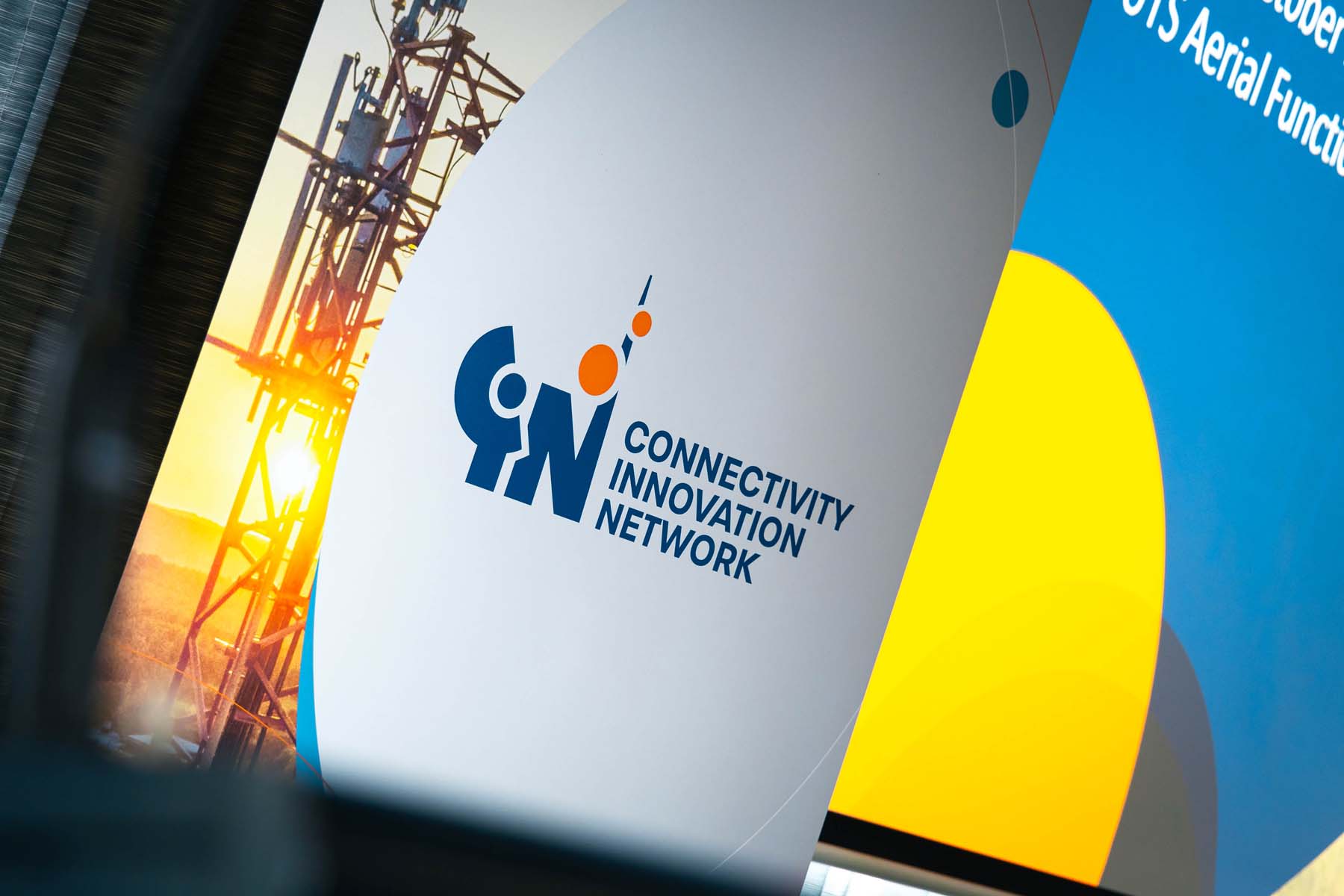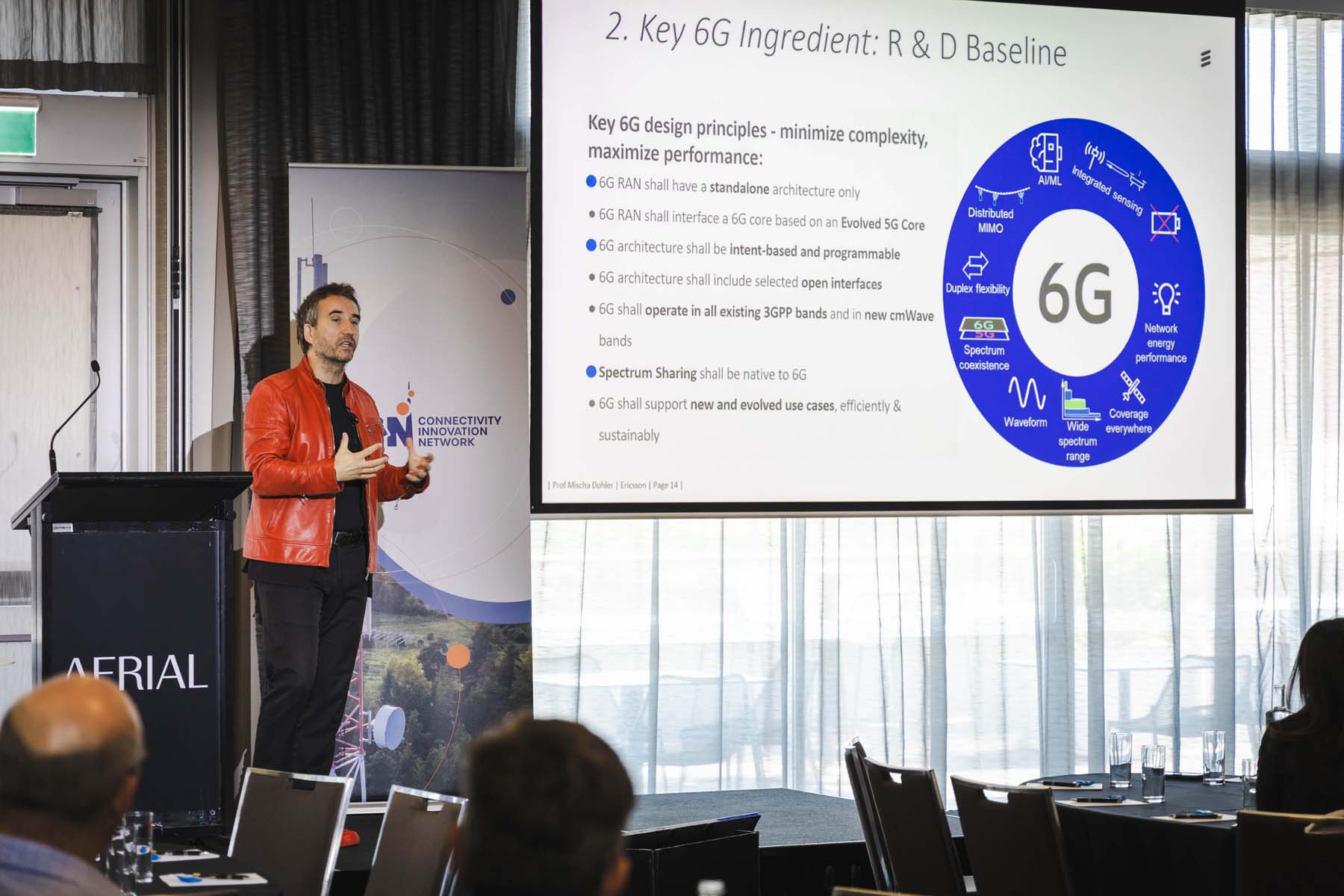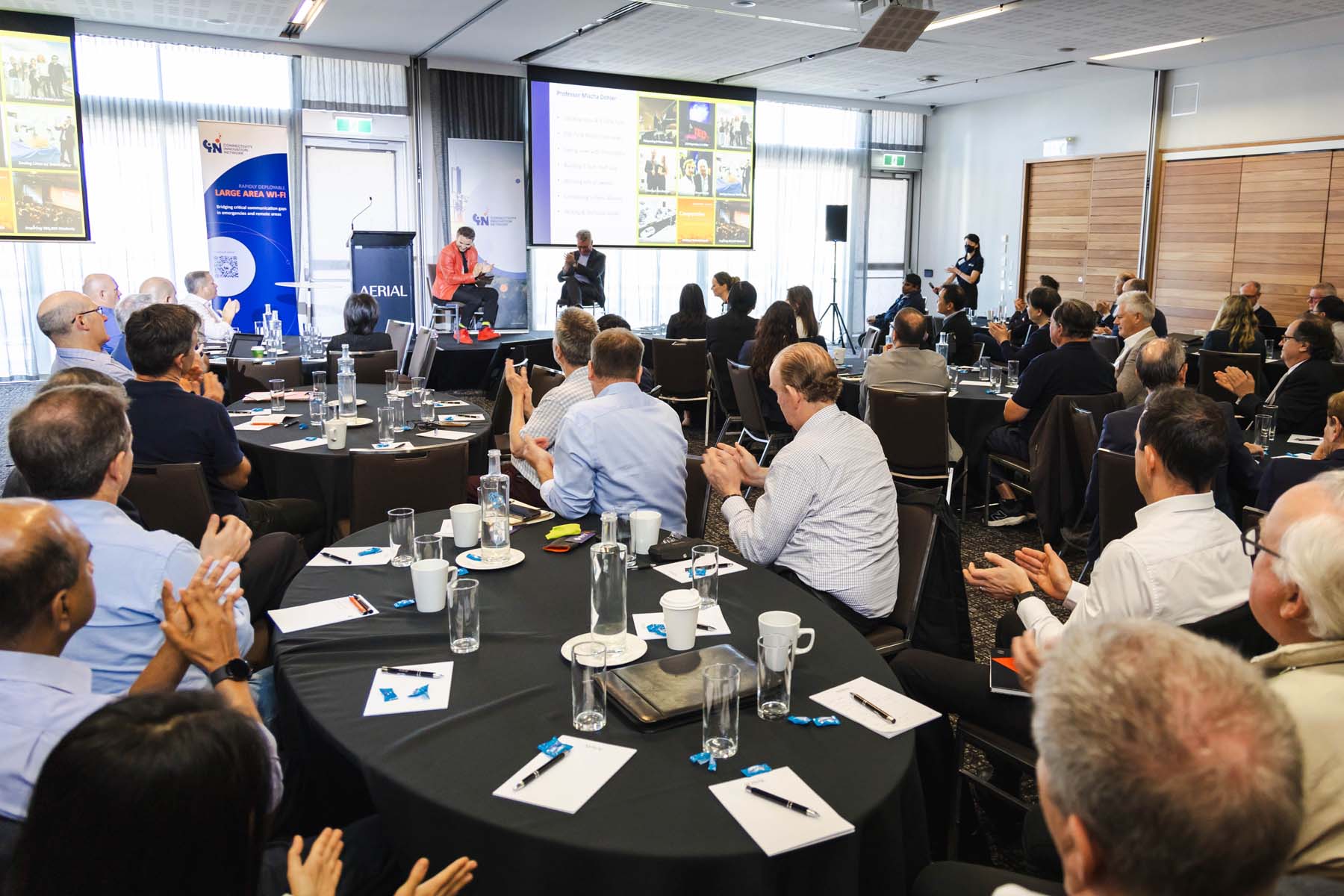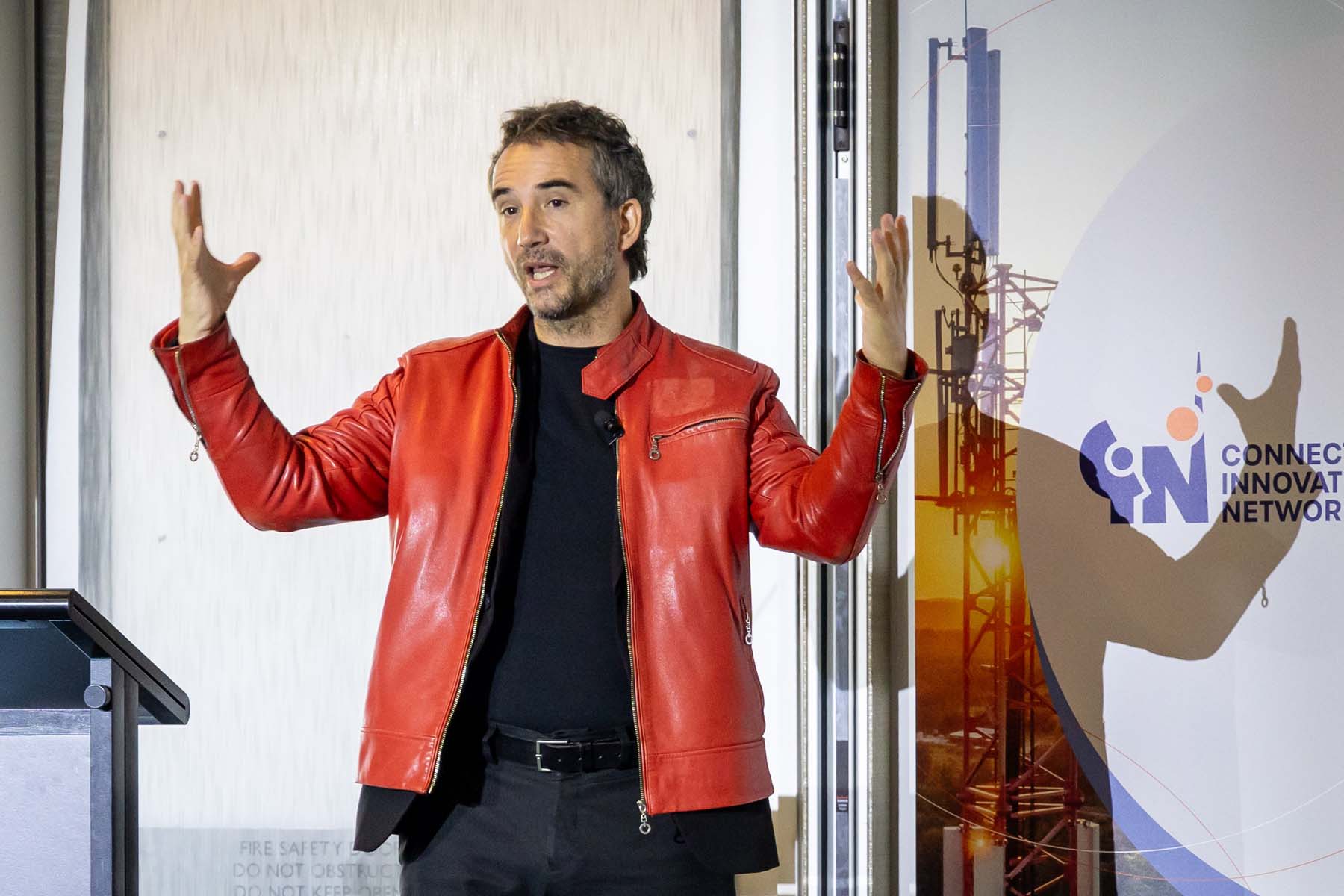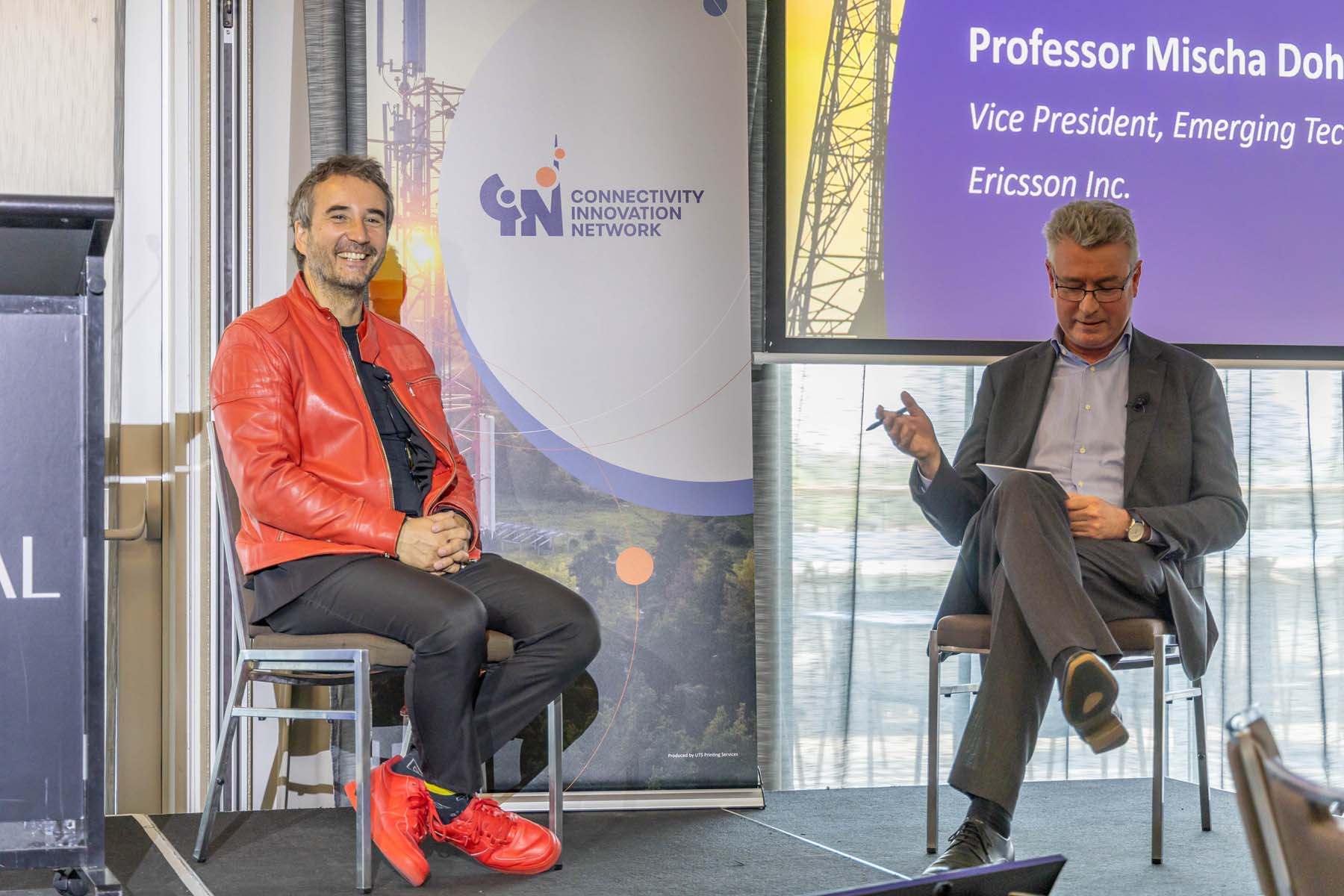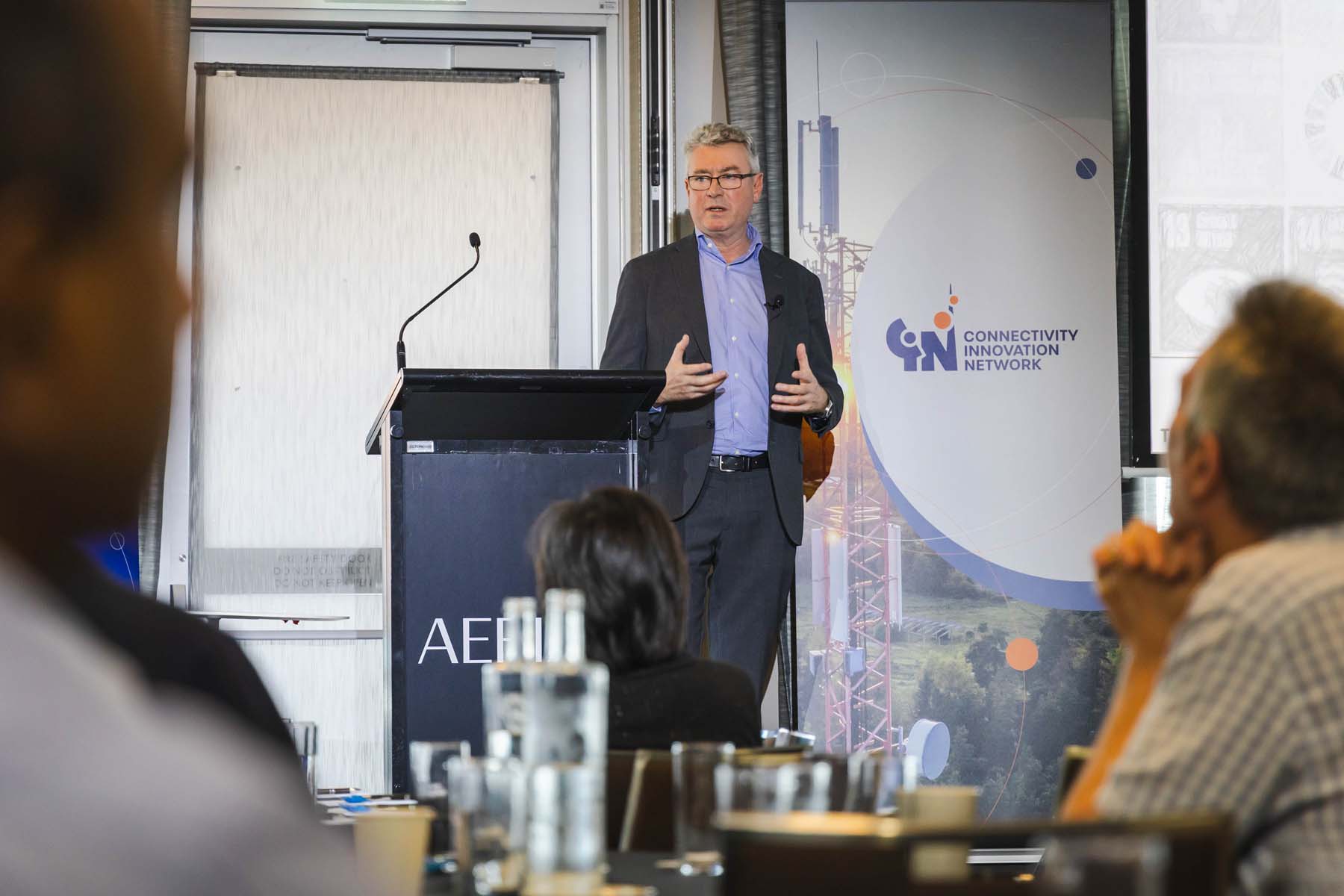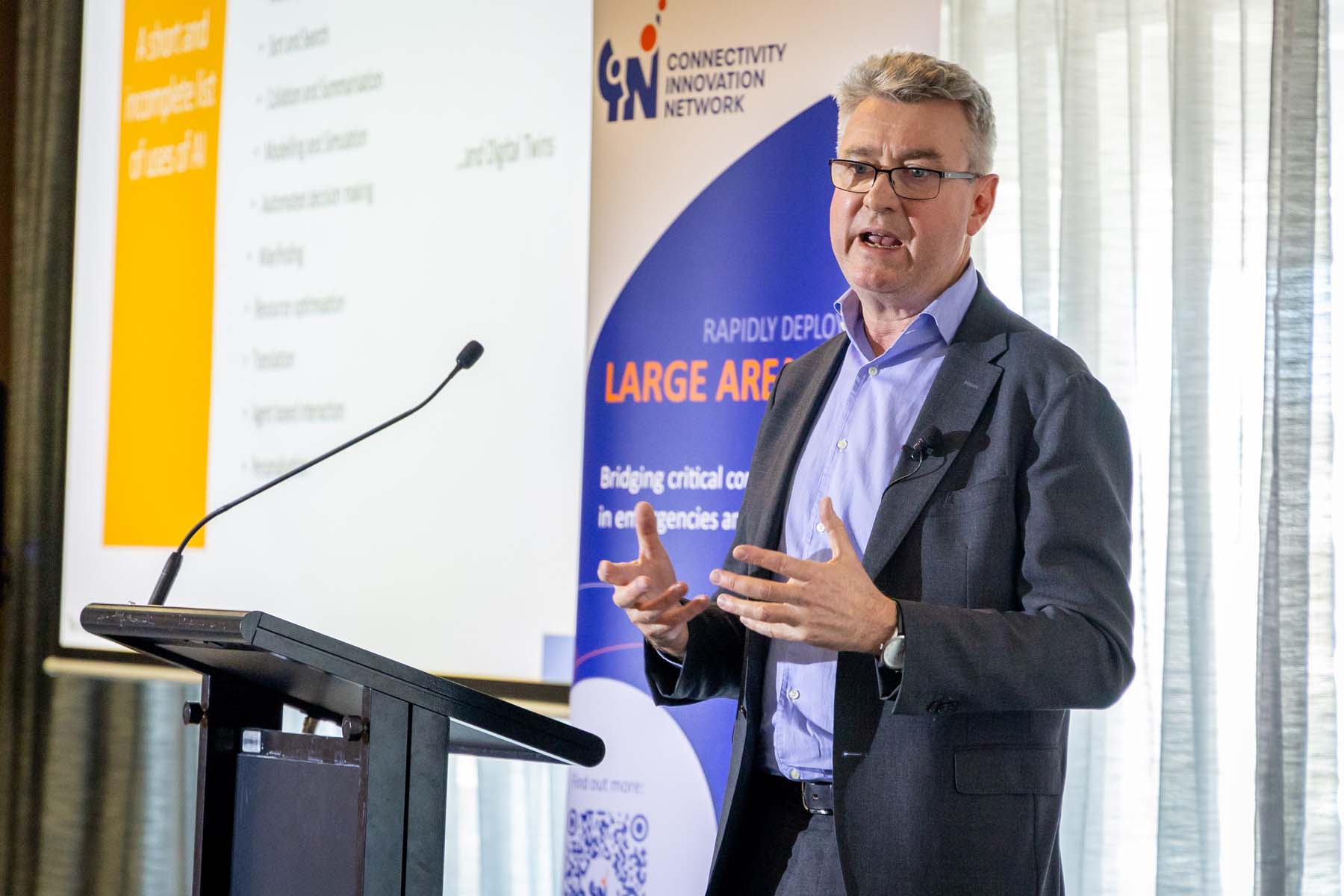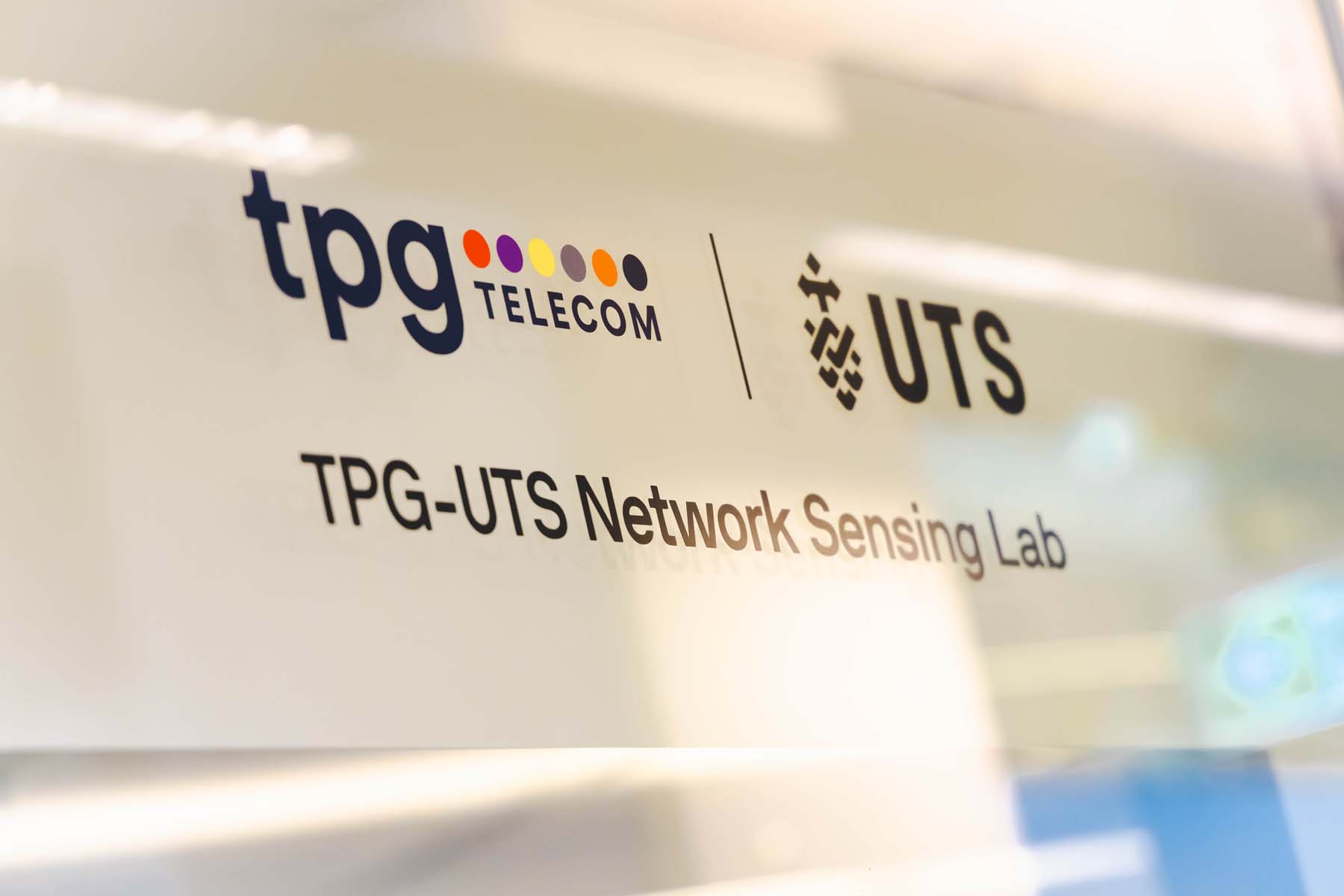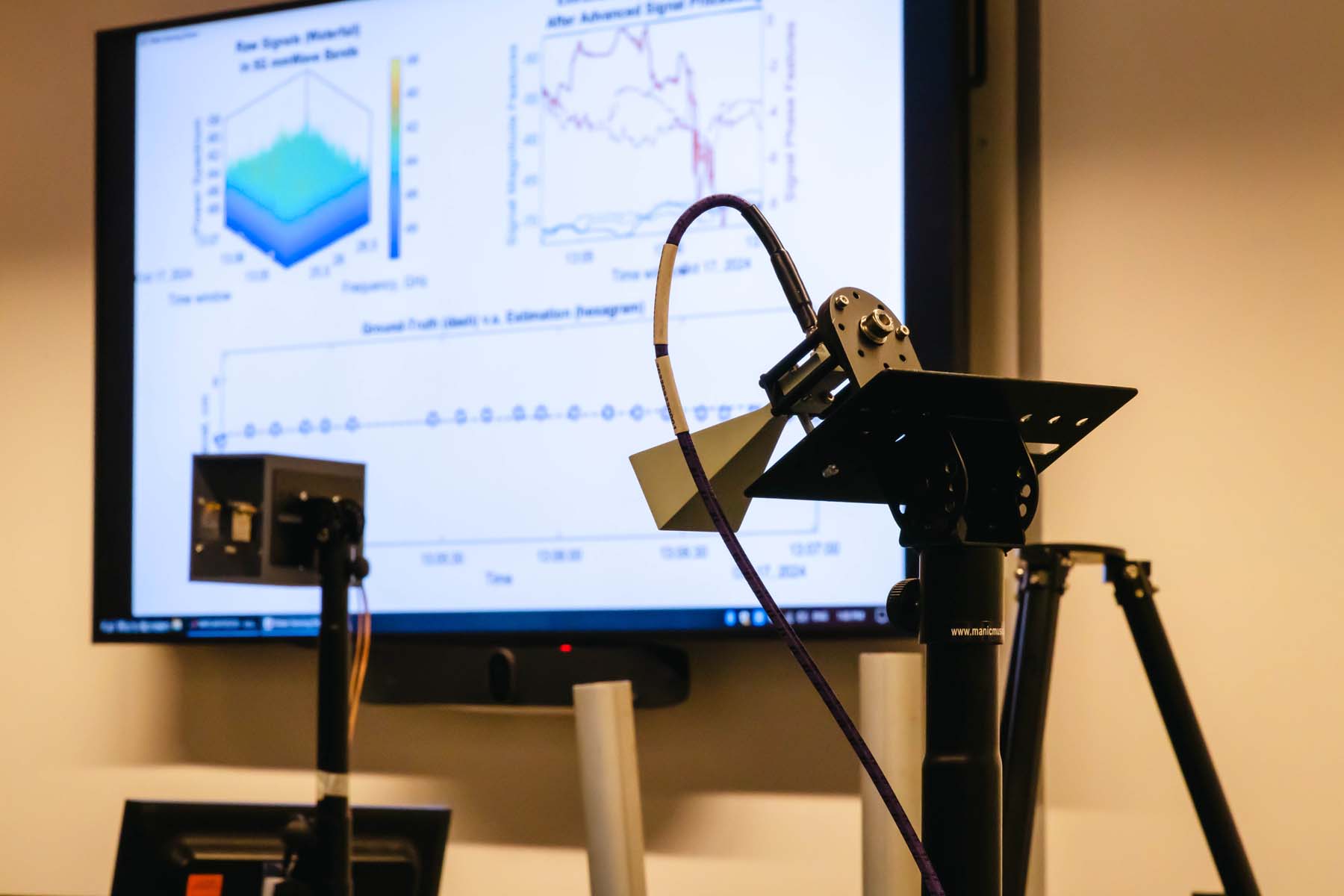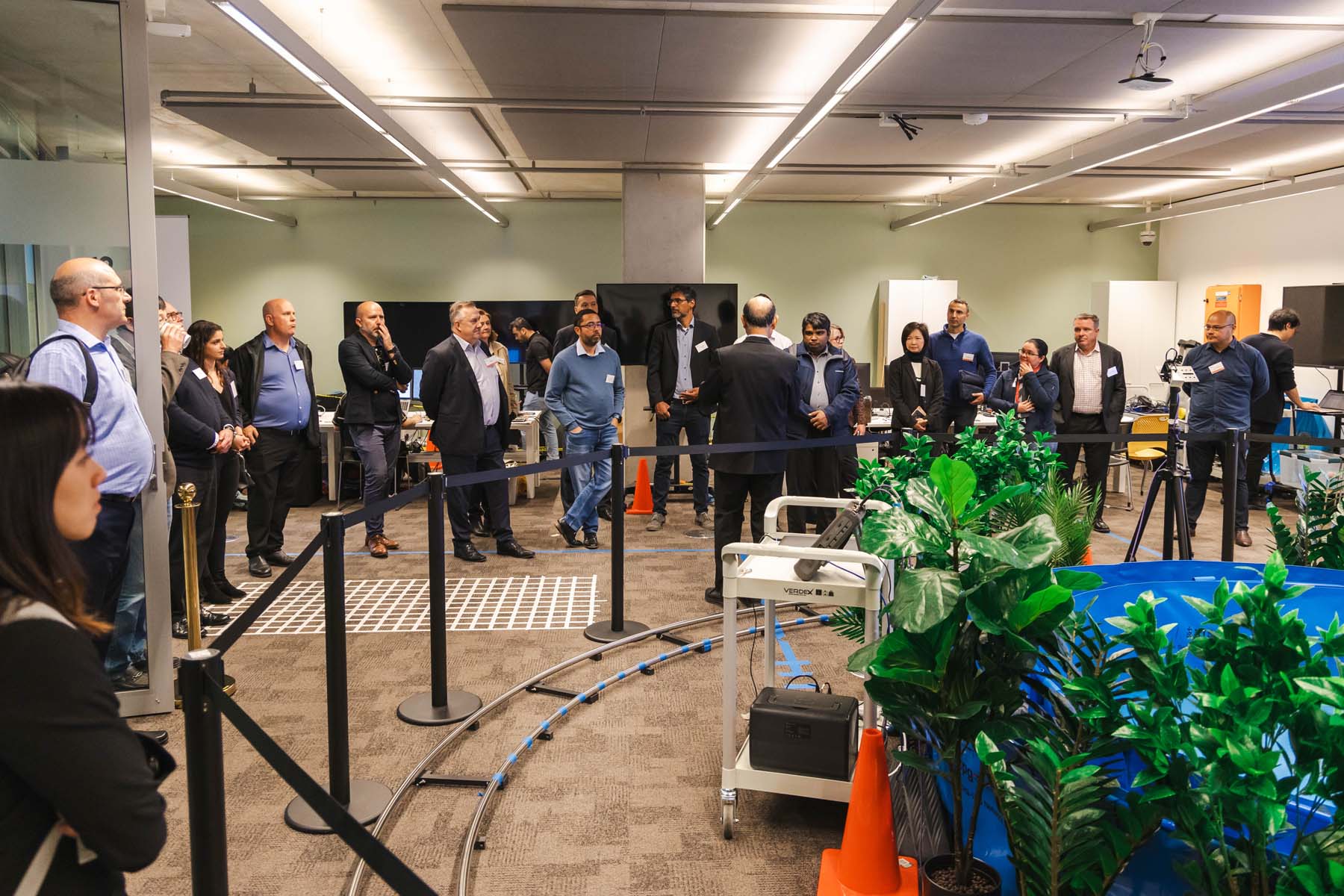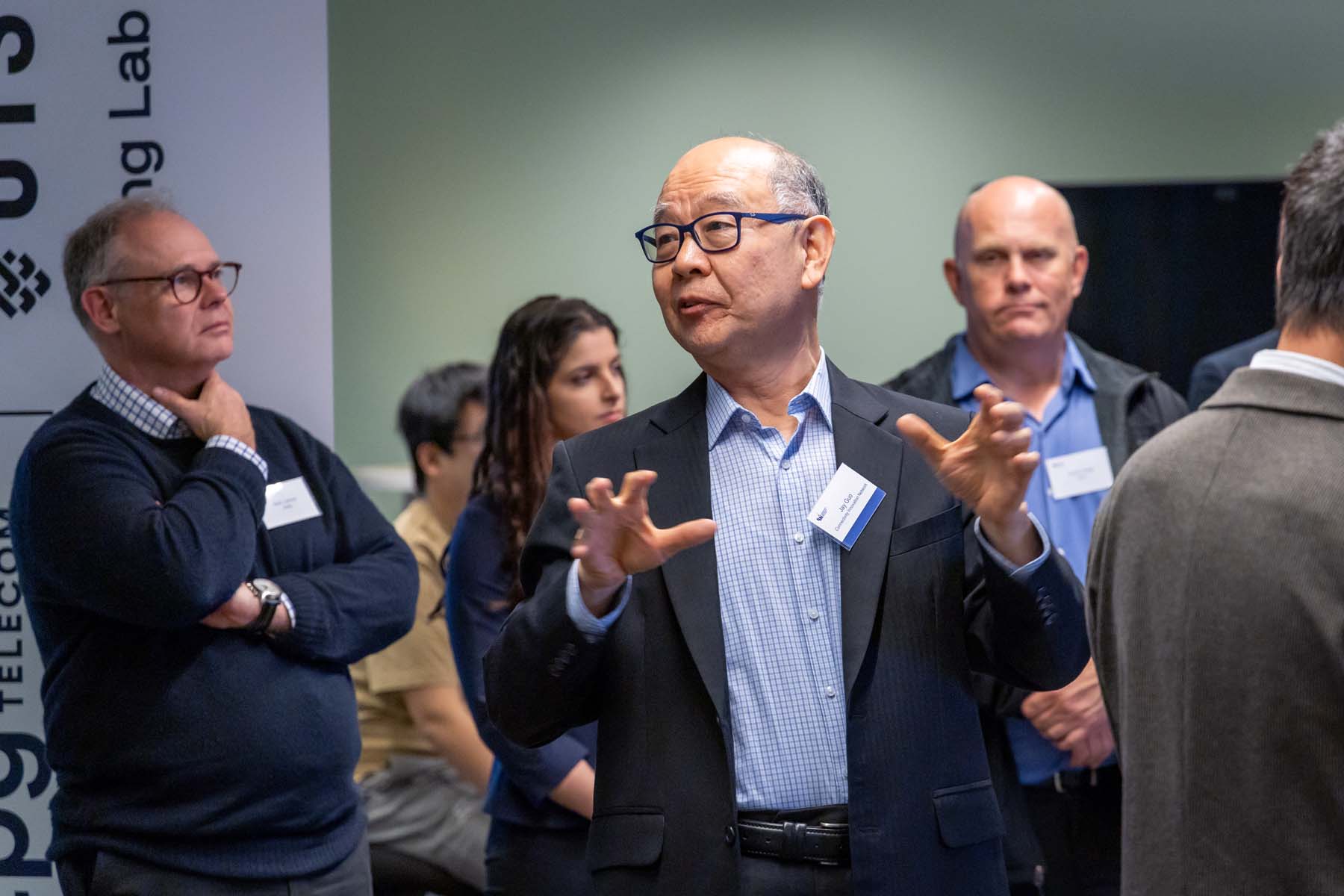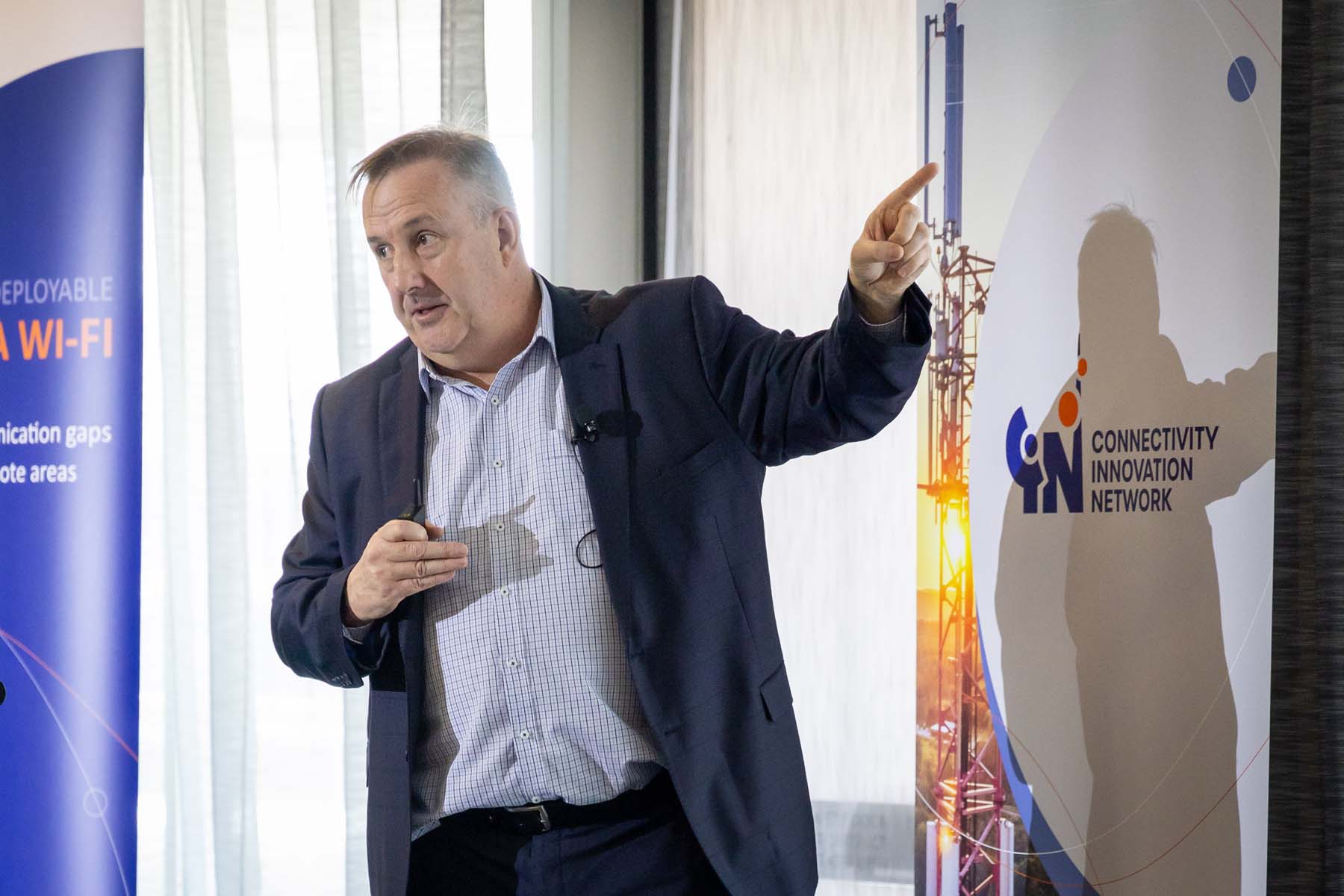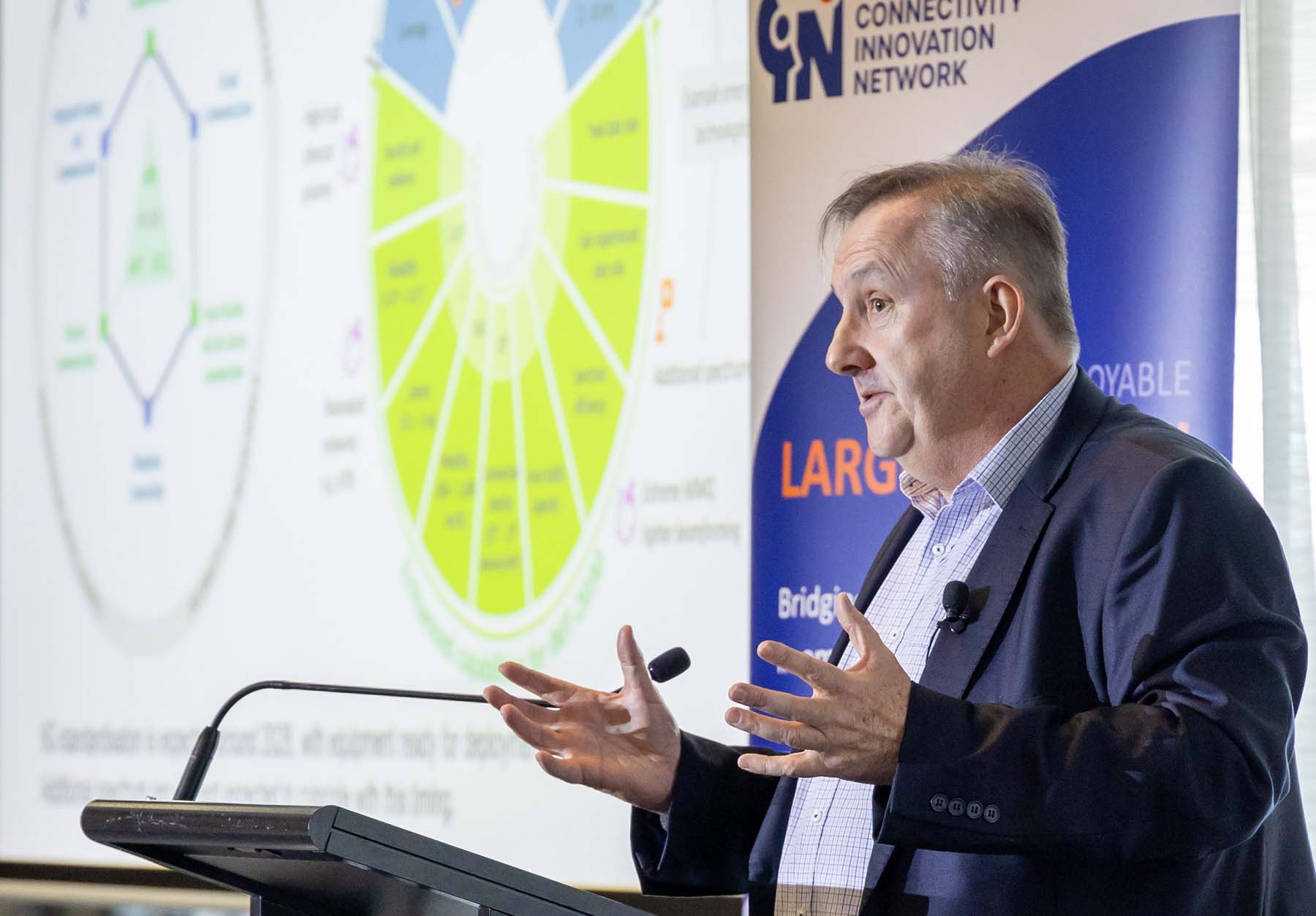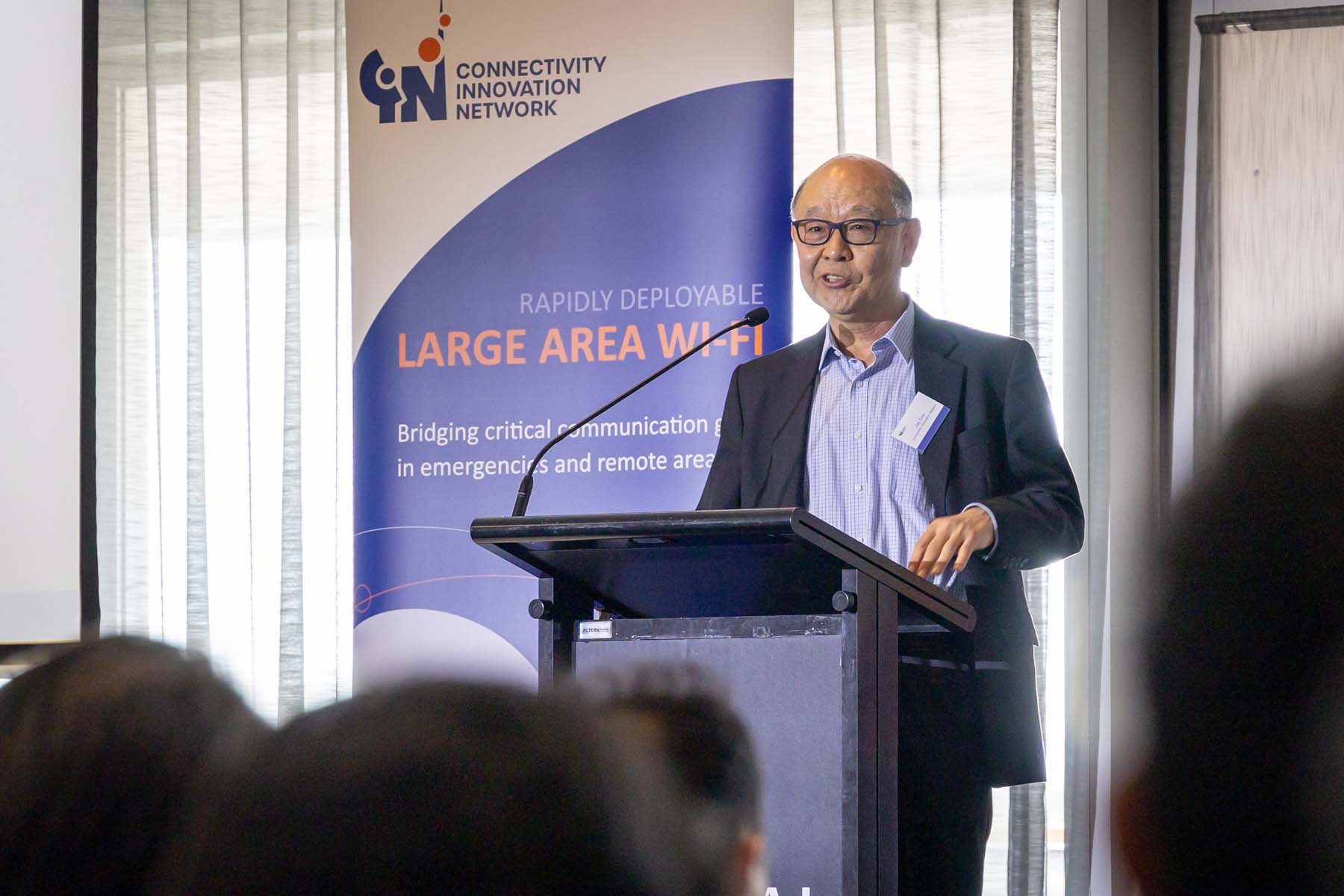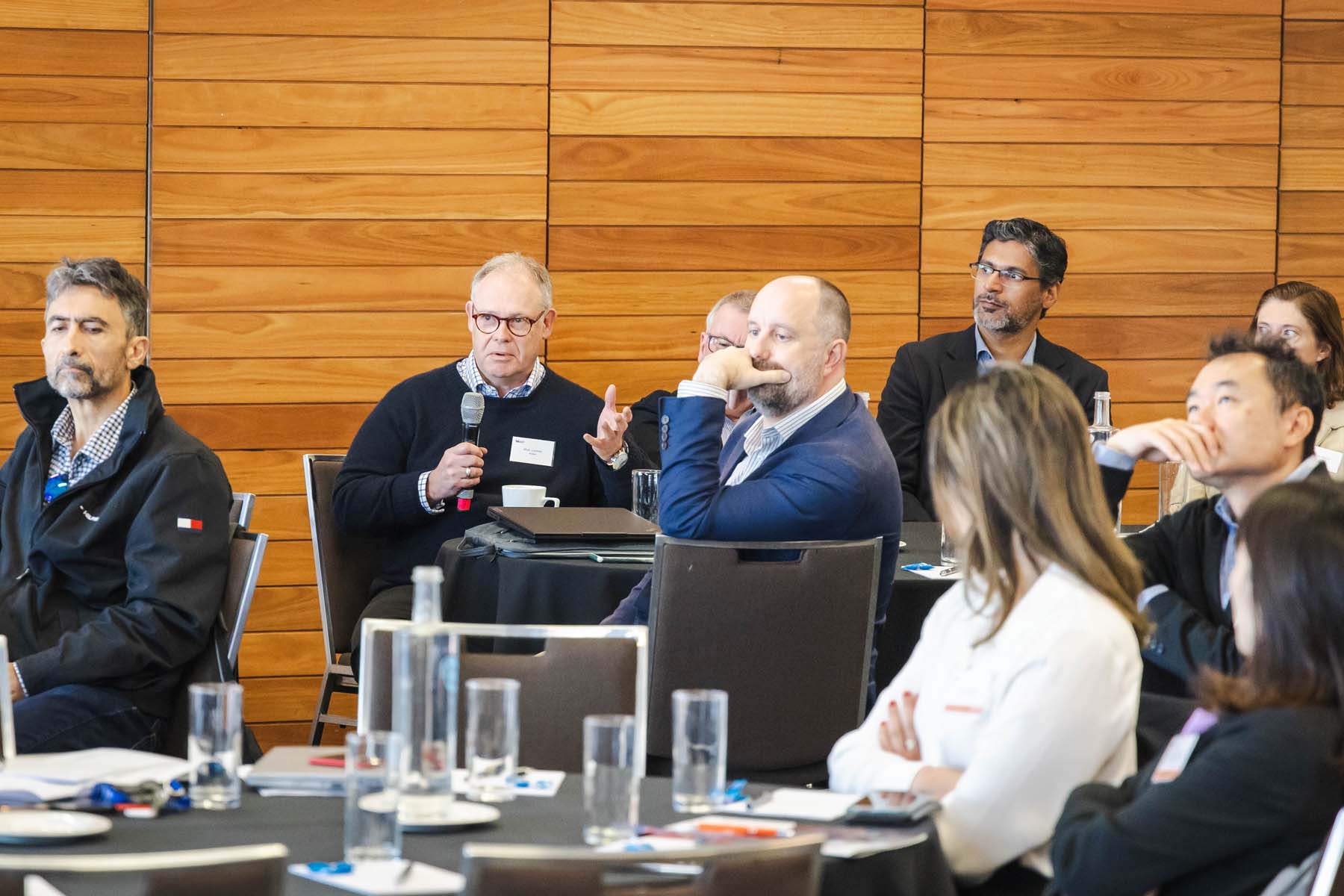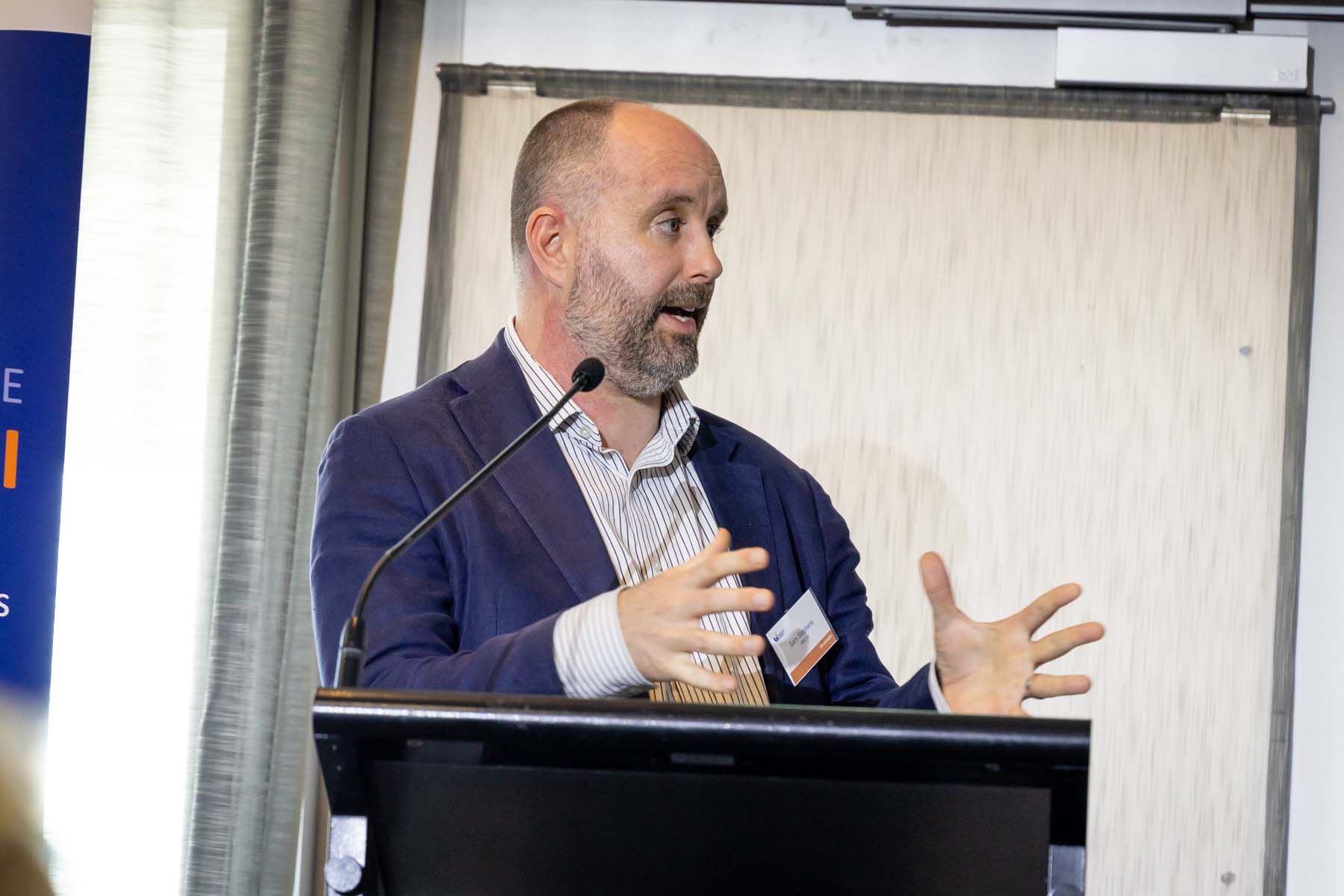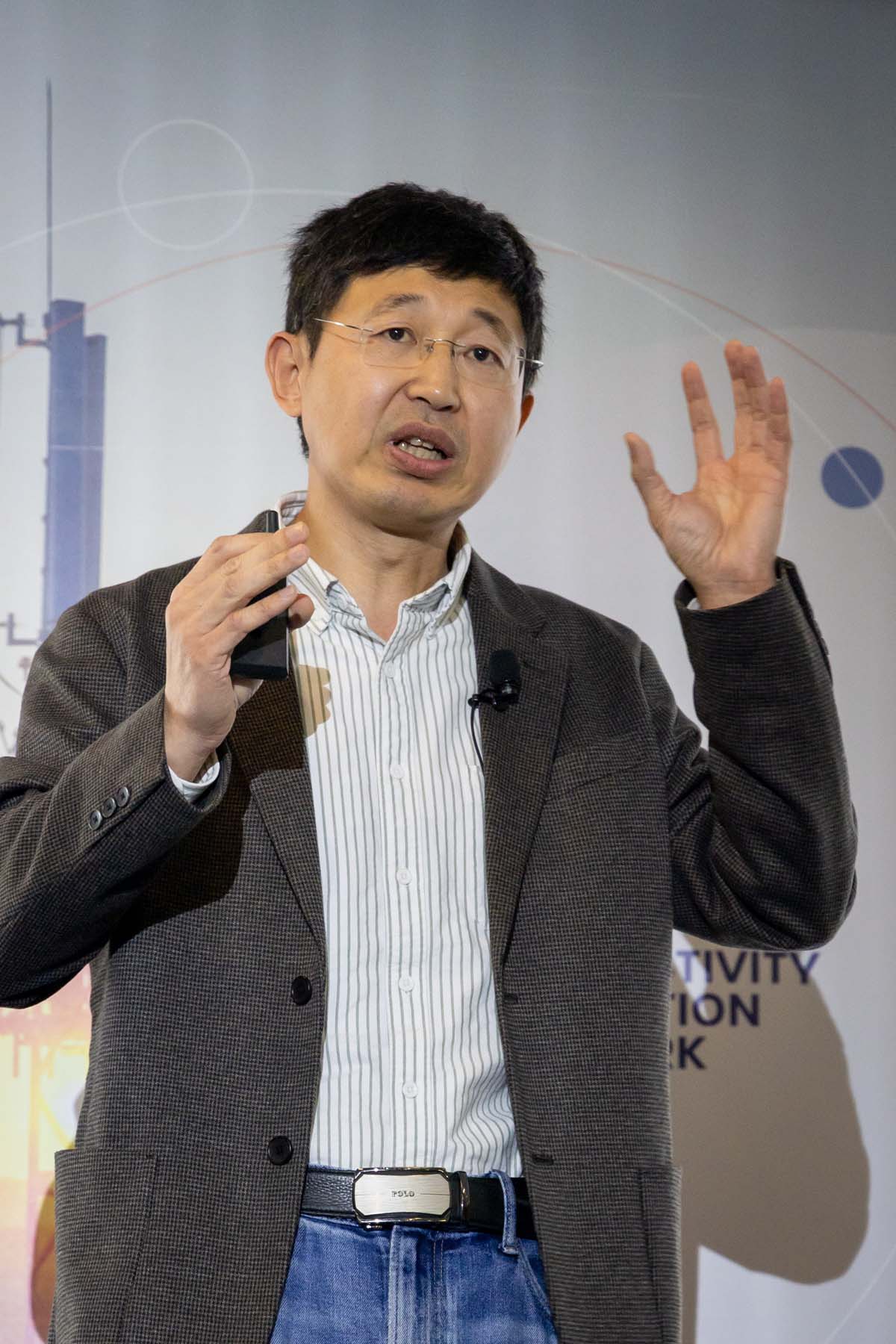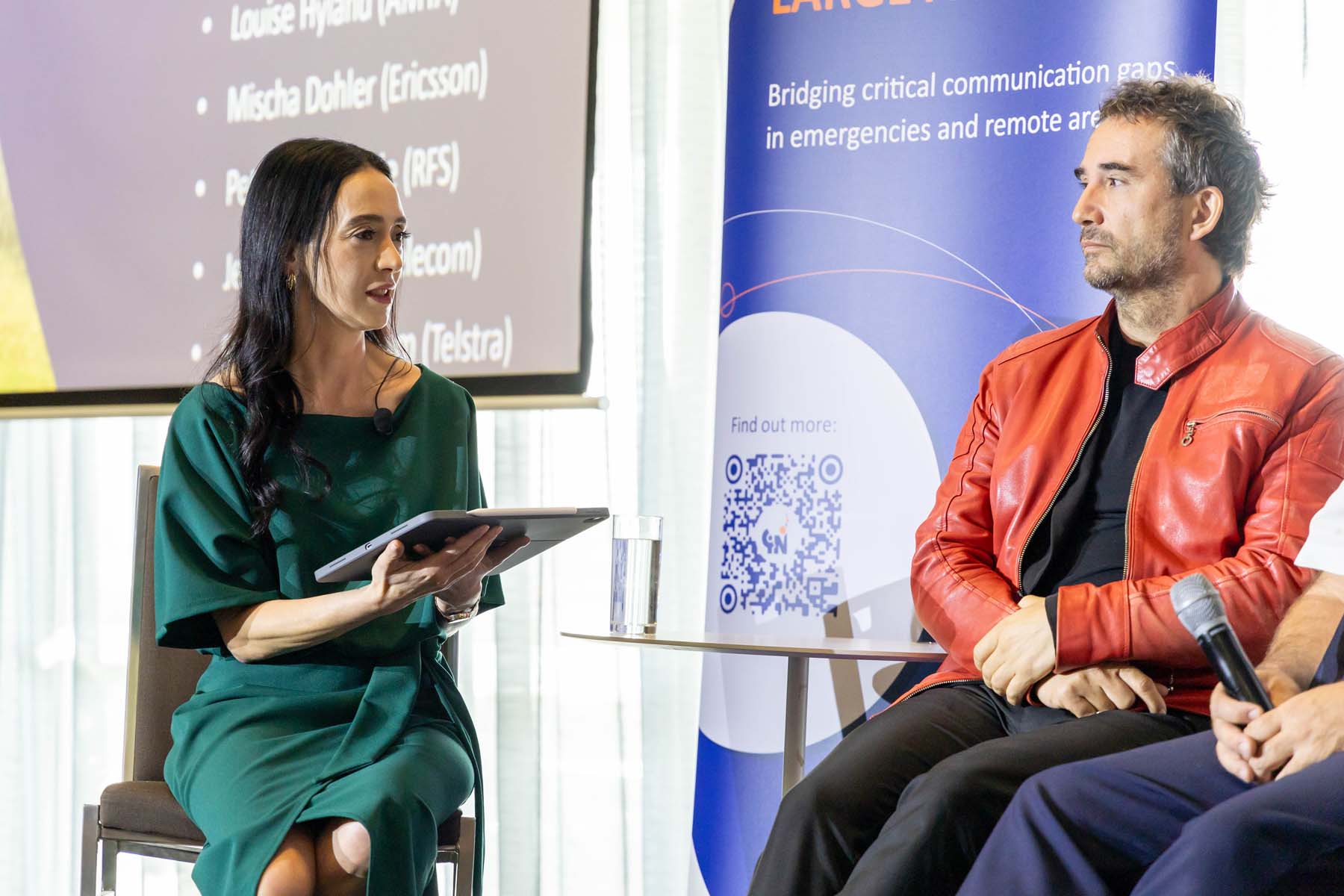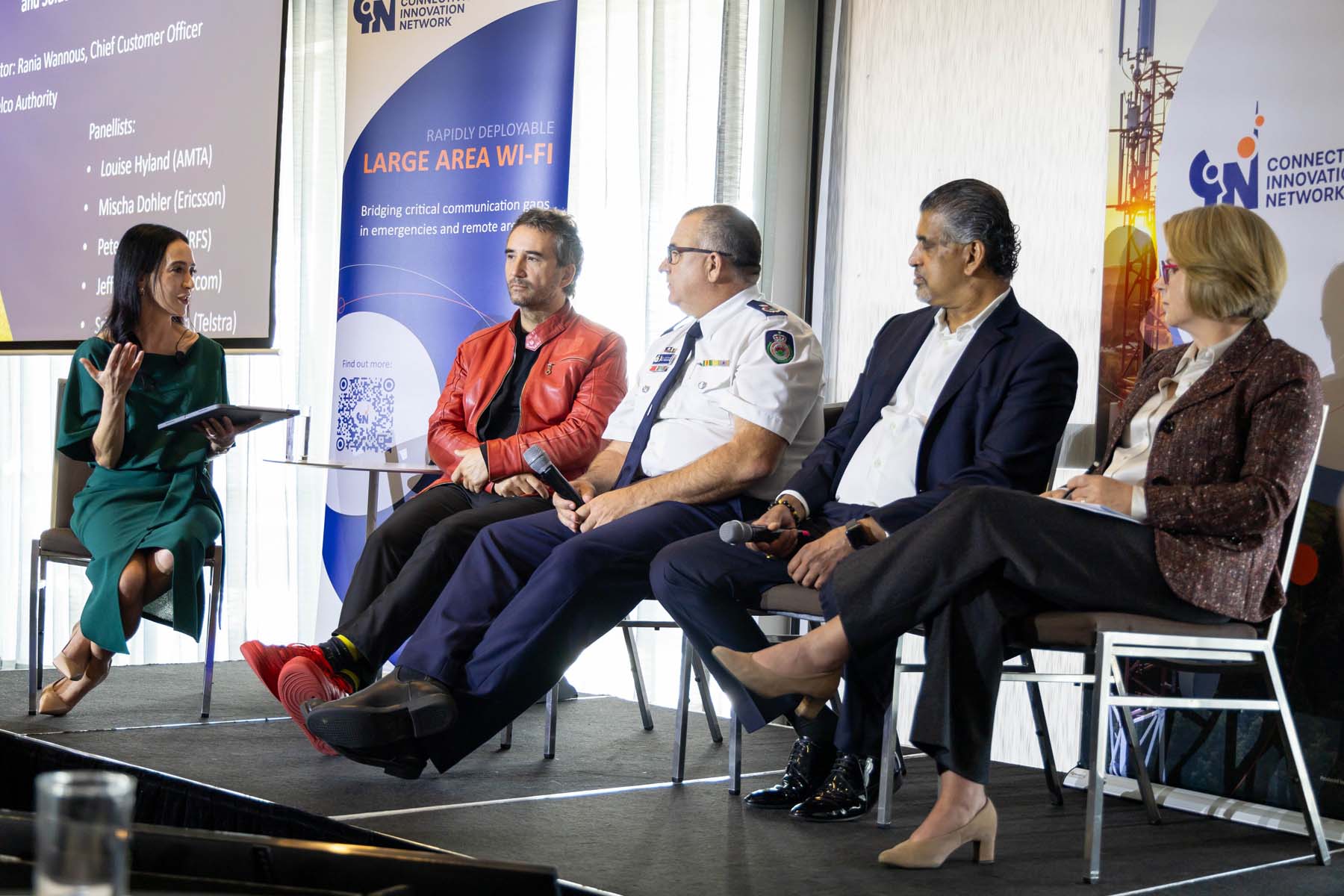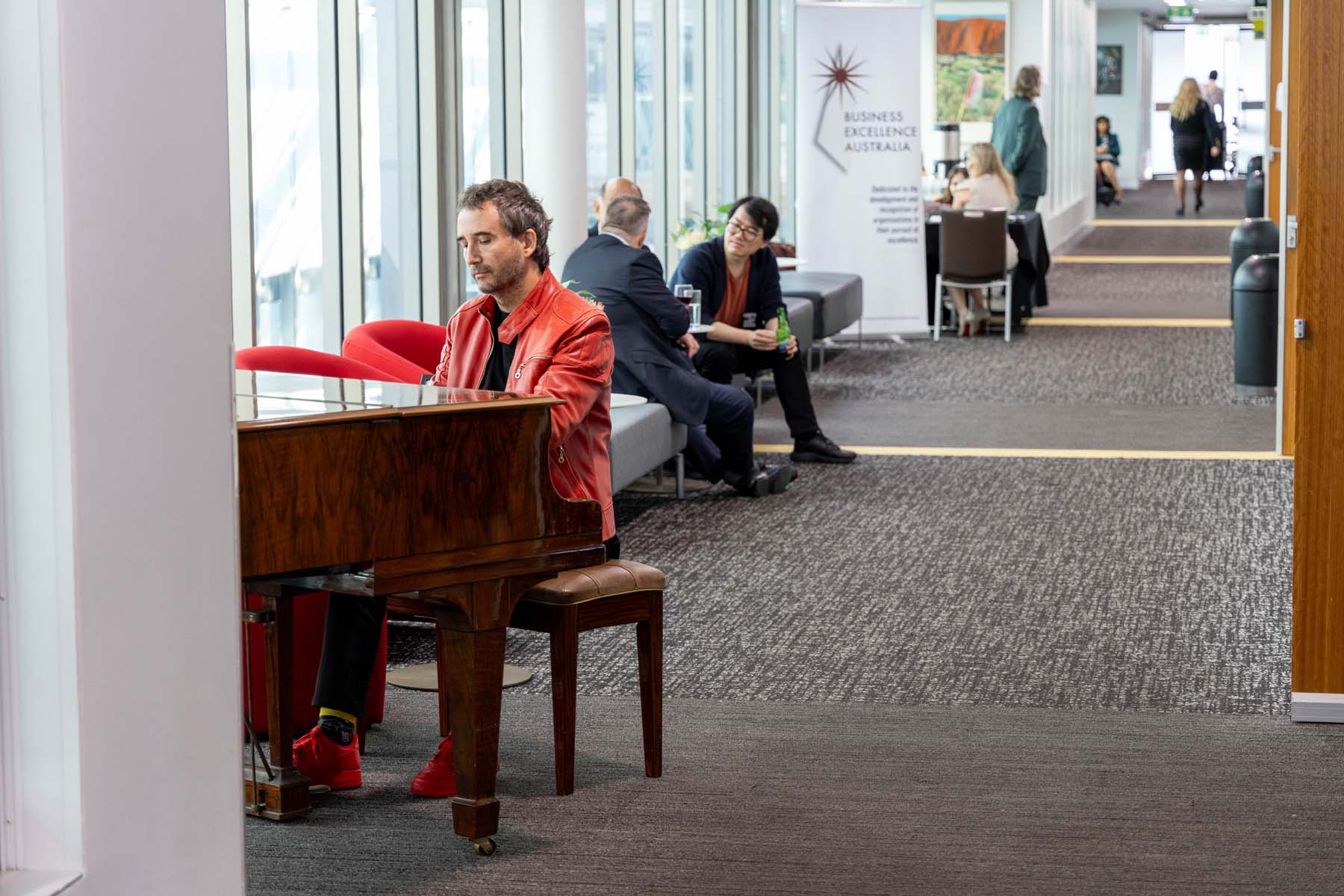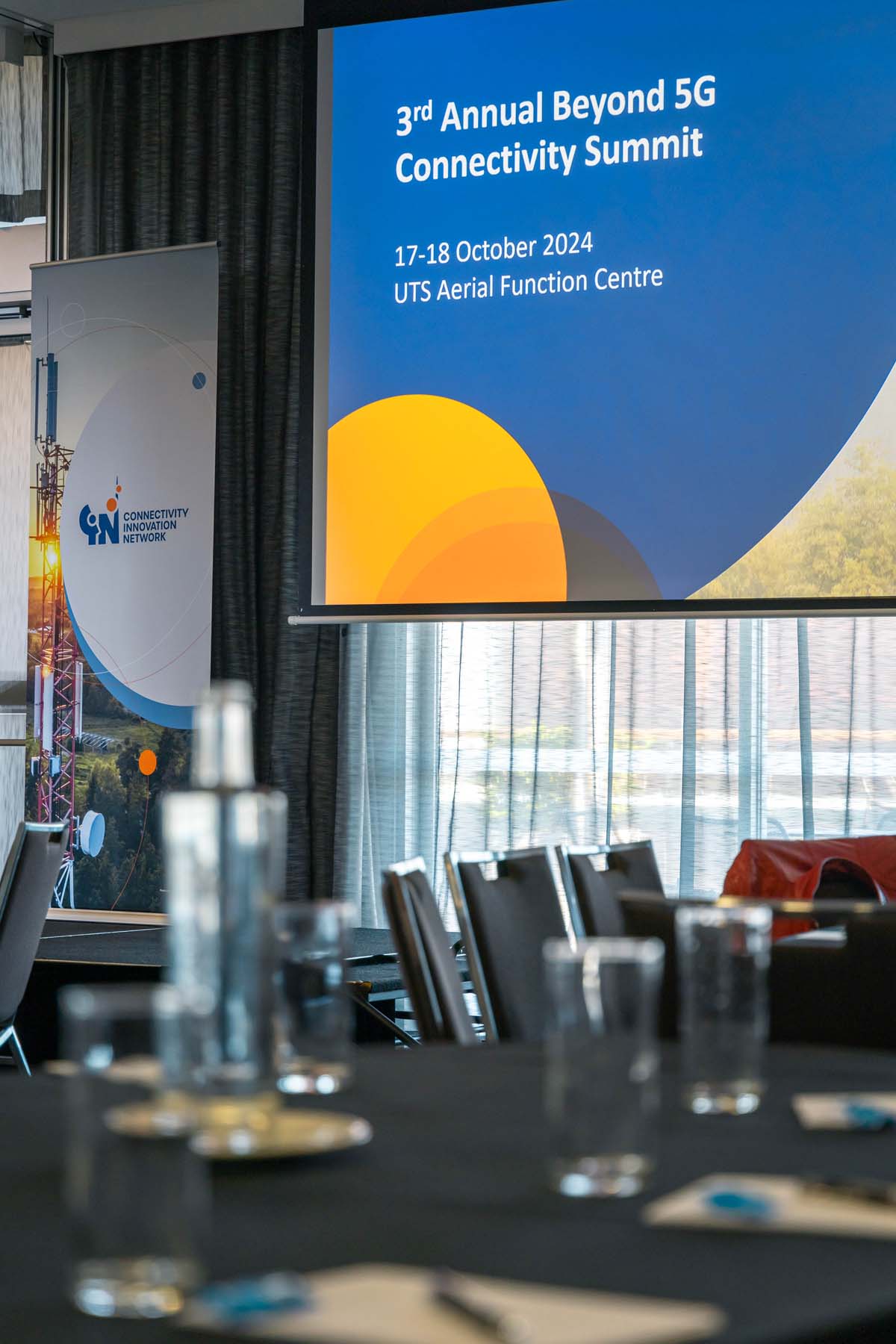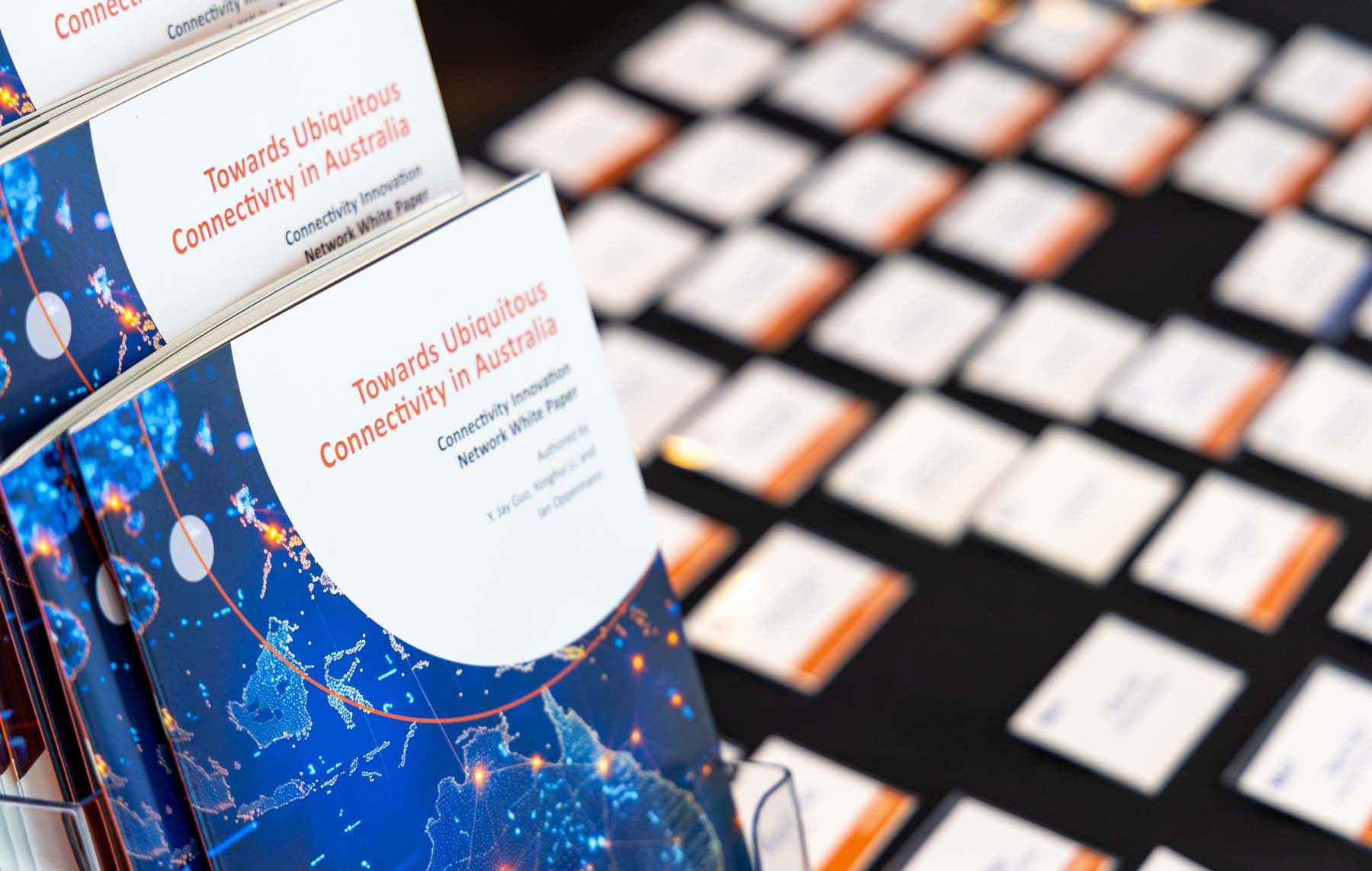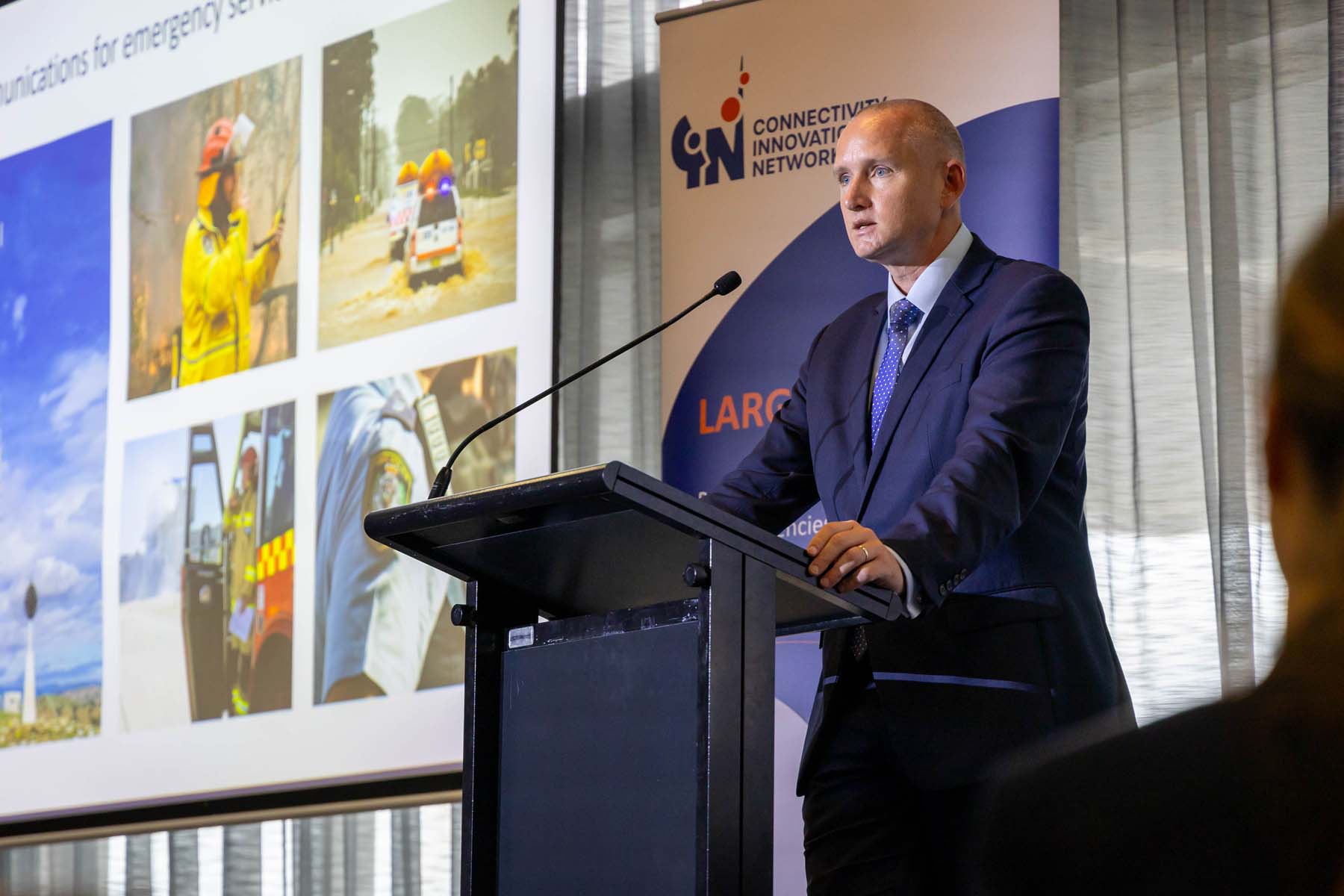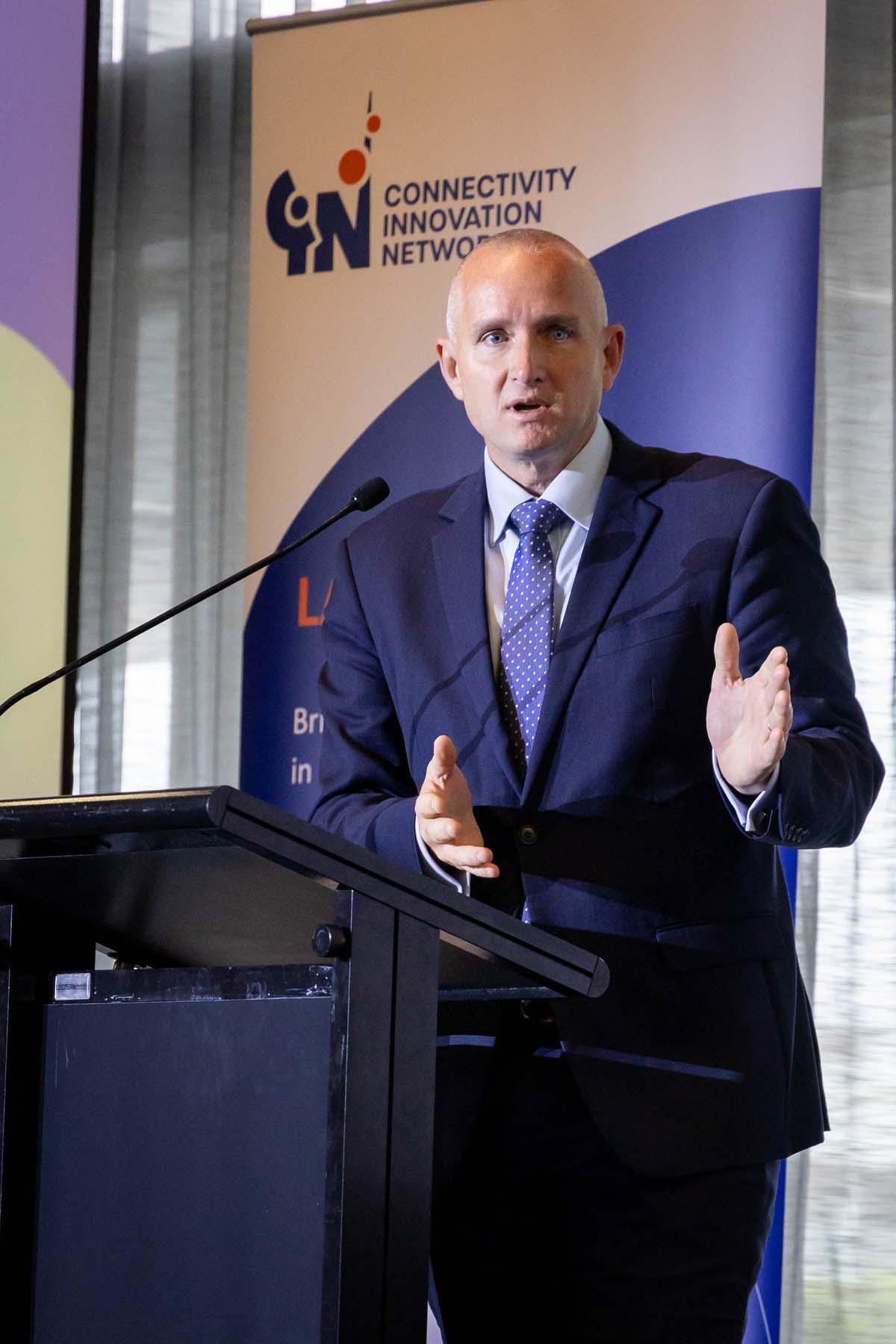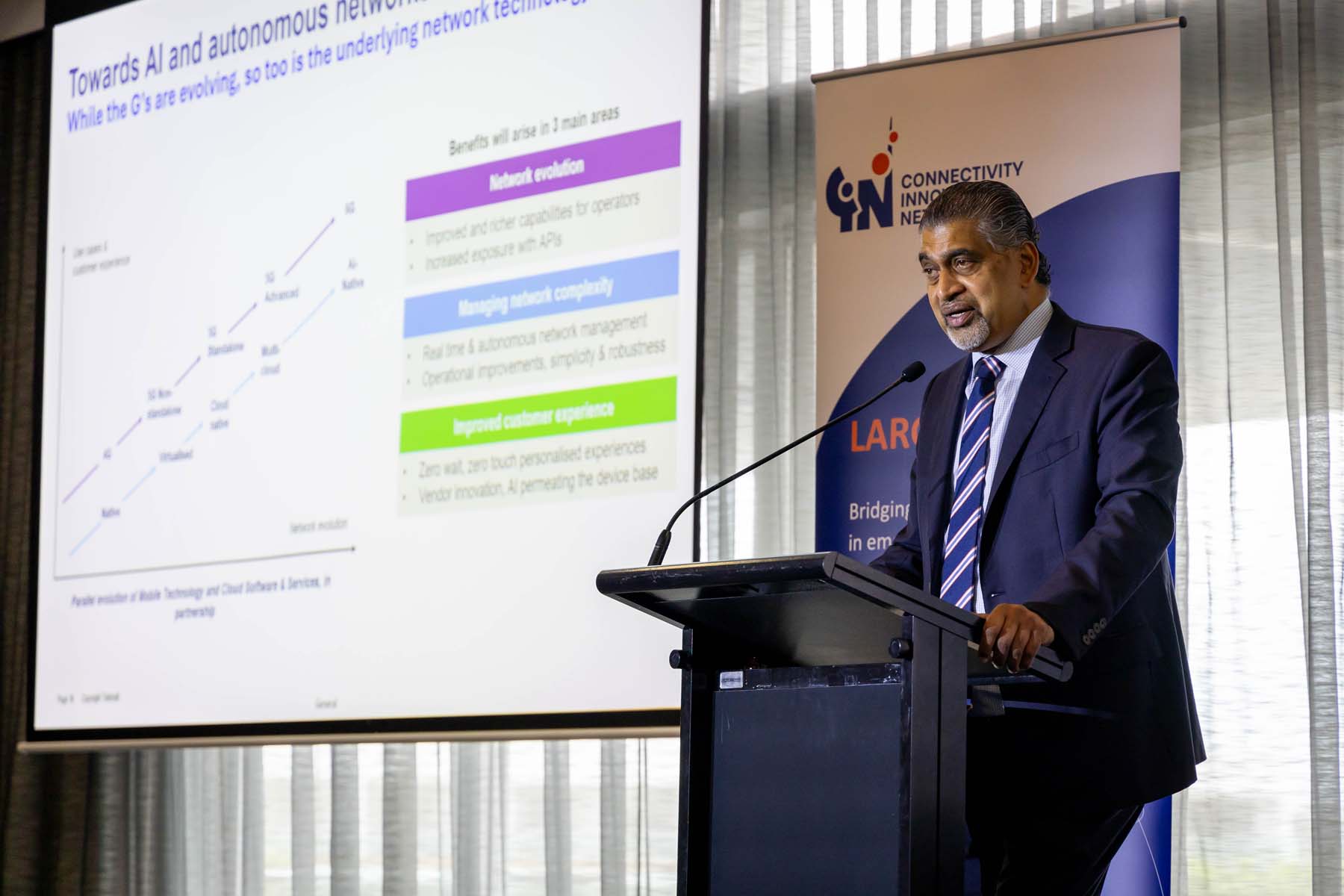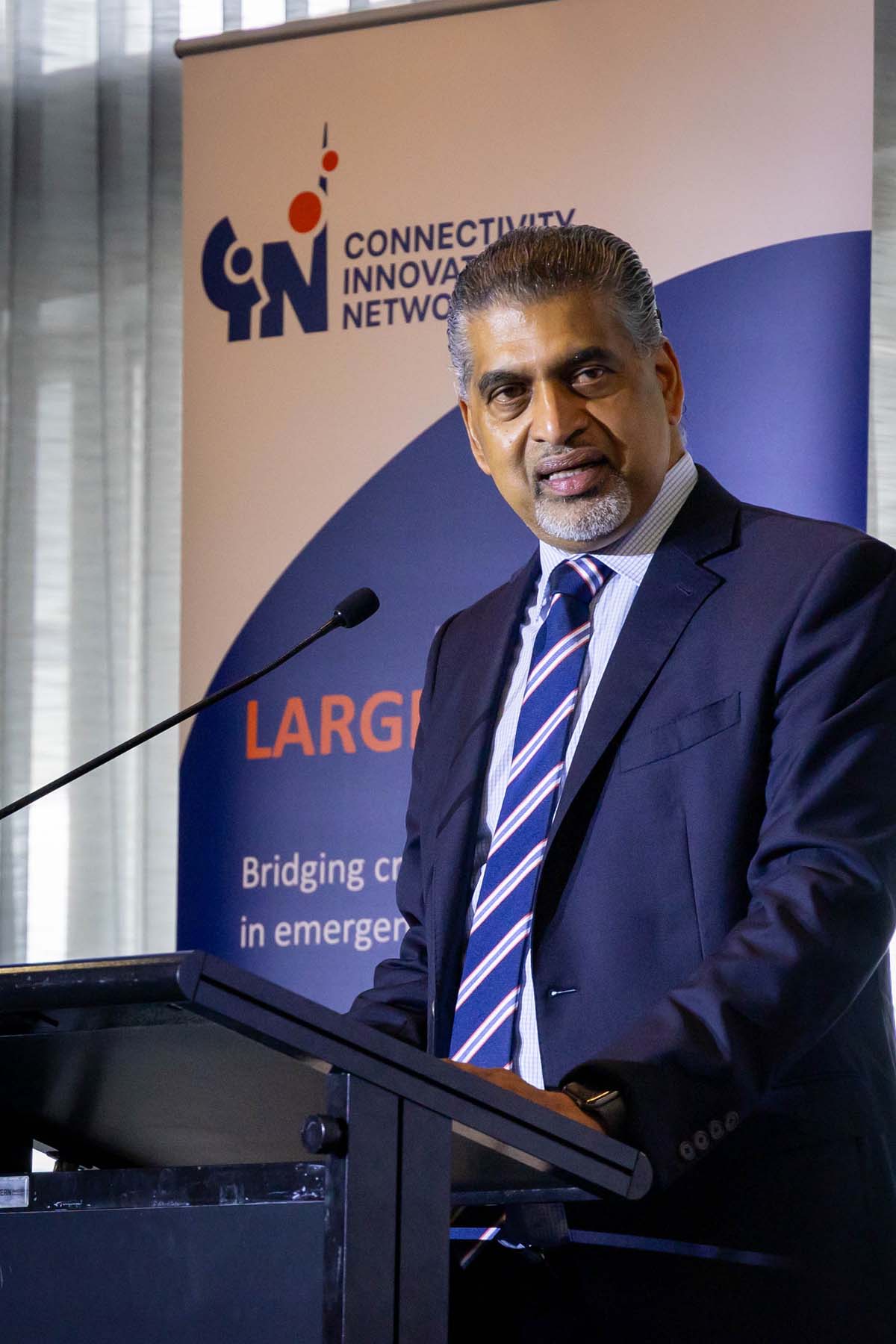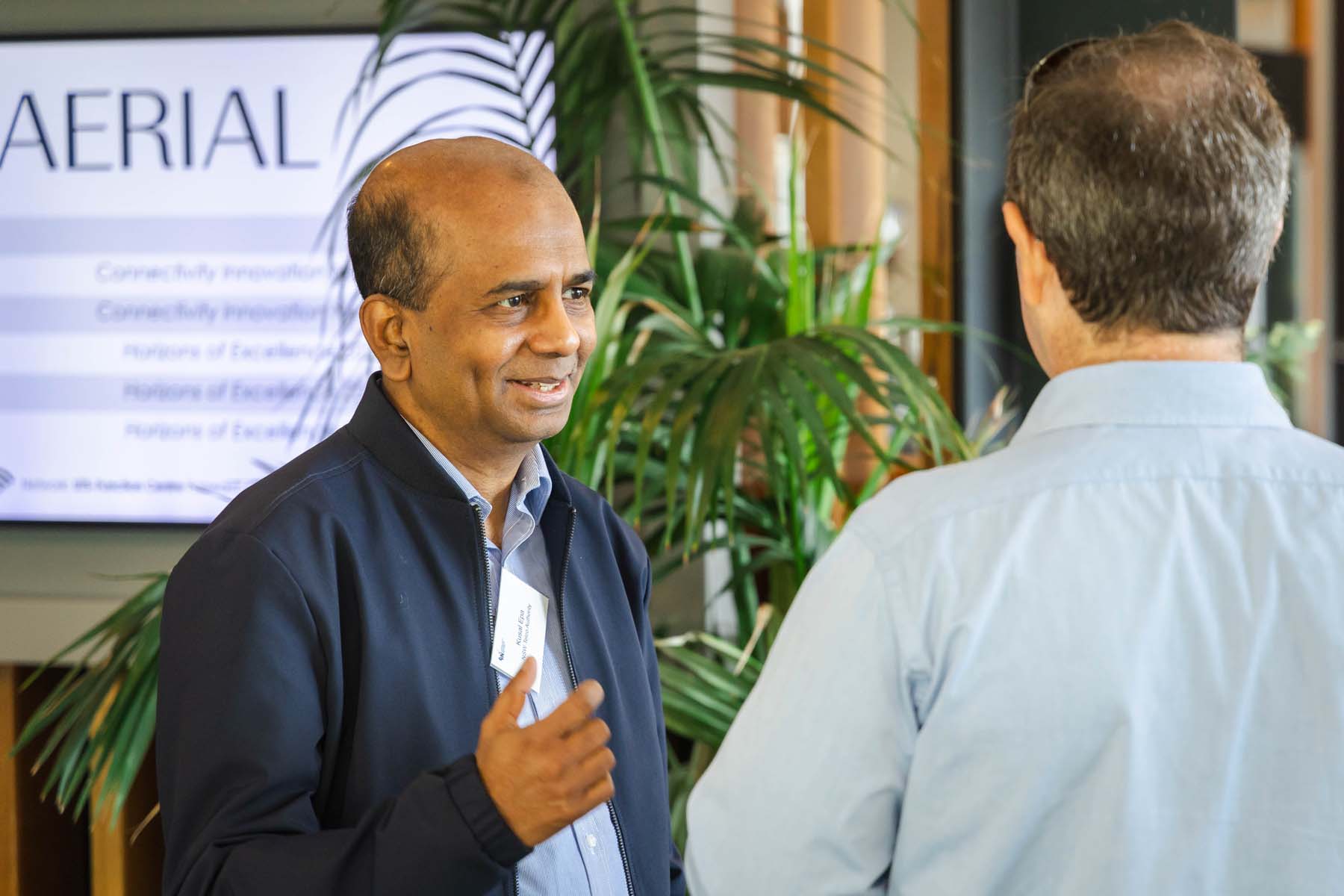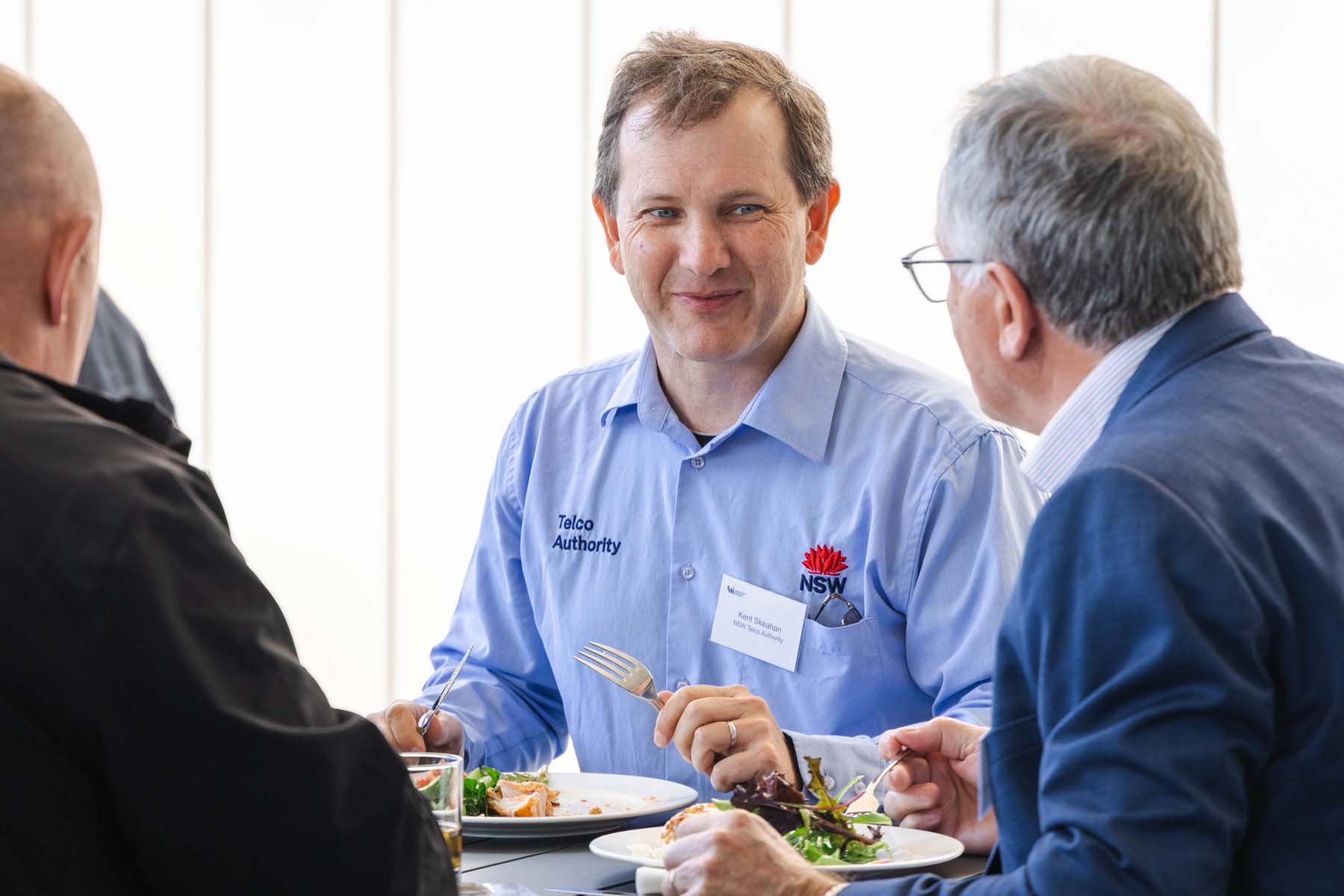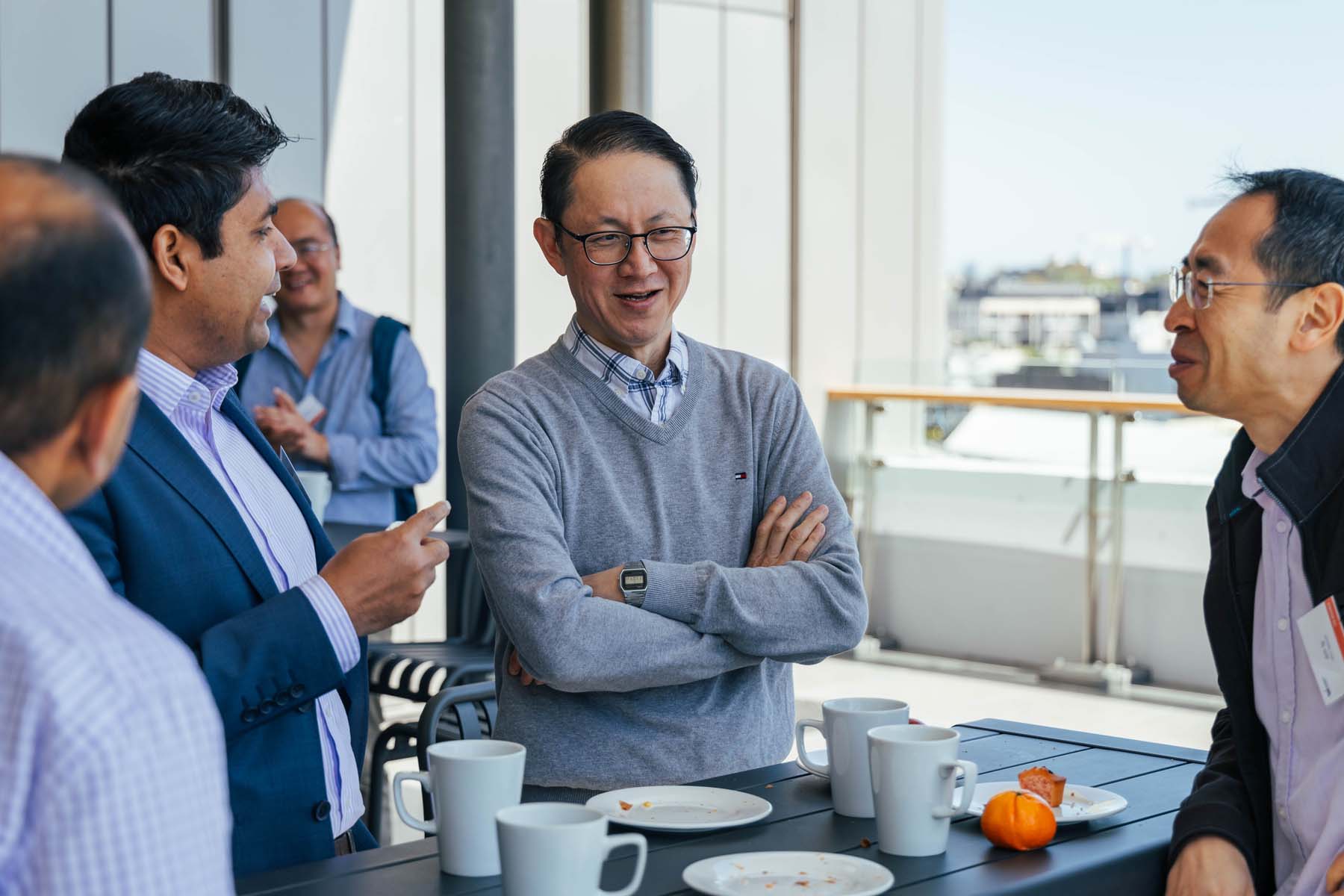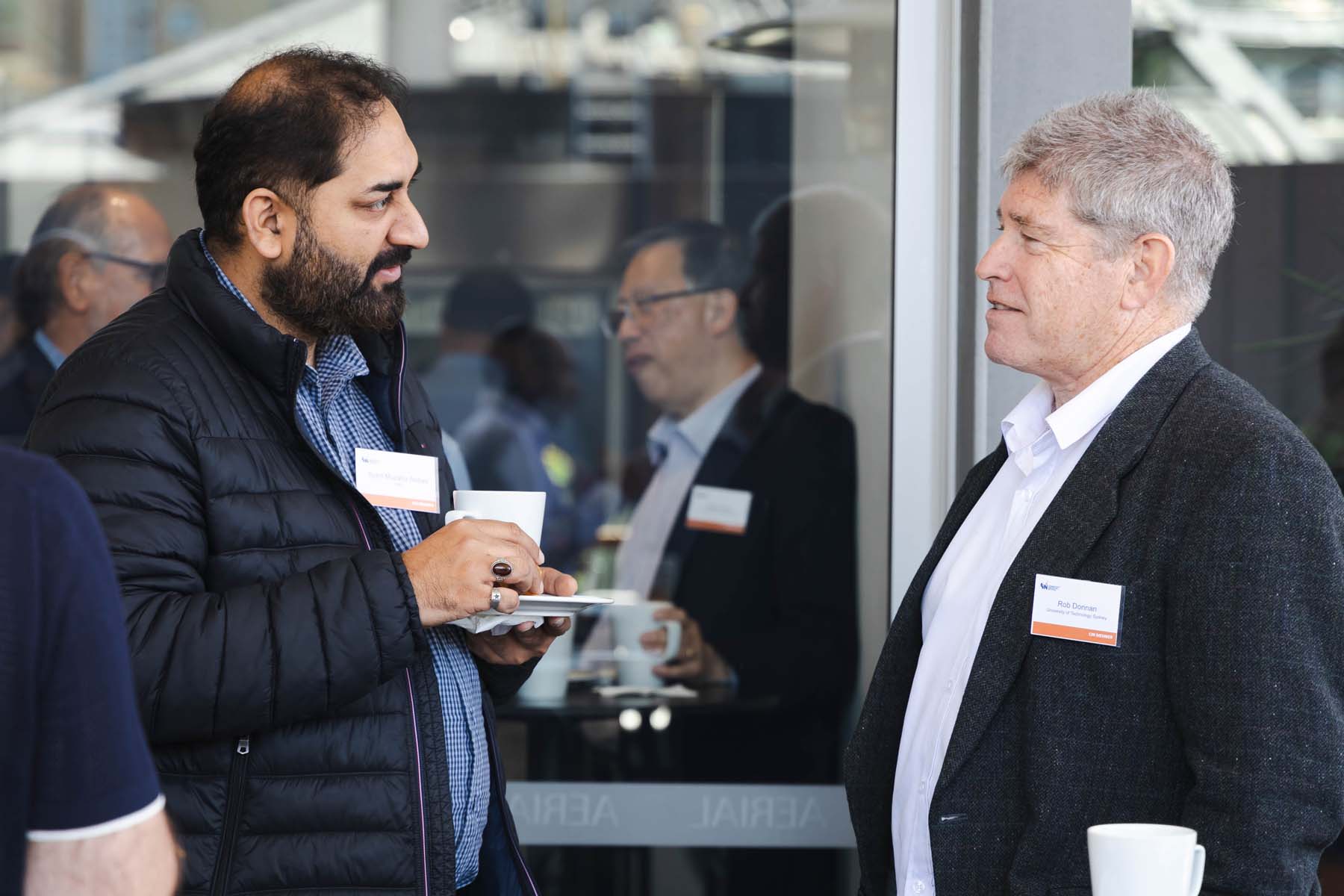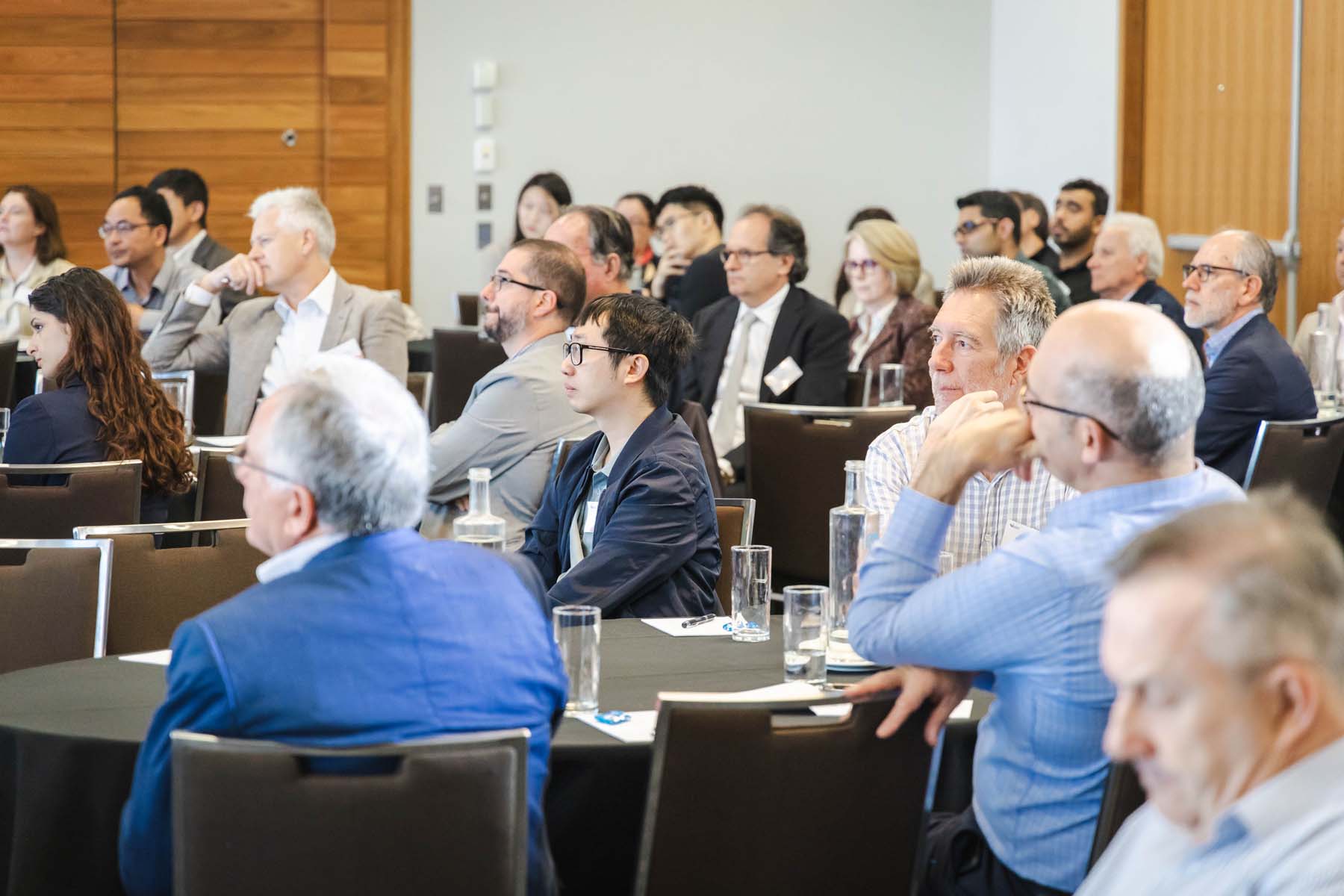The 3rd Annual Australian Beyond 5G Connectivity Summit: Shaping the Future of Connectivity
Event: 3rd Annual Australian Beyond 5G Connectivity Summit
Date: 17 and 18 October 2024
Location: Aerial Function Centre, University of Technology Sydney
On 17 and 18 October 2024, the Connectivity Innovation Network hosted the 3rd Annual Australian Beyond 5G Connectivity Summit, bringing together industry leaders, researchers, and policymakers to explore the innovations that will define the future of connectivity. The event showcased two days of in-depth presentations and discussions, focusing on the advancements driving the transition from 5G to 6G and highlighting the Connectivity Innovation Network’s role in supporting connectivity innovation across Australia.
Day 1: Industry Insights and Innovations
The first day of the summit was industry-focused, with a spotlight on the advancements in 5G, the journey towards 6G, and emerging technologies such as artificial intelligence (AI), augmented reality (AR), and spectrum capabilities Industry experts and technology innovators discussed the practical applications of these technologies across various sectors, including healthcare, manufacturing, and public safety, highlighting their potential to boost productivity, enhance digital inclusion, and promote sustainable growth.
The Road to 6G
The day’s first keynote was delivered by Professor Mischa Dohler, Vice President of Emerging Technologies at Ericsson, who outlined the transformative potential of 6G and the evolution of 5G. Professor Dohler emphasised the success of fixed wireless access (FWA) in bridging rural connectivity gaps in the United States, suggesting that similar deployments could enhance digital inclusion in Australia.
He showcased applications such as 5G-enabled telesurgery, which can provide critical medical services to remote communities, and the integration of AI into extended reality (XR) devices, which hold the potential to transform training and operations in sectors like education and manufacturing. Professor Dohler stressed the need for collaboration on mid-band spectrum allocation to ensure seamless 6G deployment, essential for real-time, AI-driven experiences.
Fireside Chat: The Ethical Dimensions of AI and Connectivity
In a fireside chat with Dr Oppermann, Professor Dohler explored the ethical implications of emerging technologies, particularly privacy concerns surrounding AI and XR. The conversation highlighted the responsibility of technologists and regulators to develop ethical frameworks that balance innovation with privacy and inclusivity, ensuring that the benefits of connectivity are equitably shared.
Expert Insights and Panel Discussions
The day continued with insights from industry leaders, including Louise Hyland, CEO of the Australian Mobile Telecommunications Association (AMTA), who advocated for a national mobile technology strategy to support 5G and 6G investment, and Distinguished Professor Jay Guo from CIN, who presented advanced antenna solutions designed to improve network efficiency and reduce costs.
Jeff Owen from TPG Telecom shared an operator’s perspective on the transition to 6G, emphasising the need to balance legacy infrastructure with new technologies. Sam Stephens from NBN highlighted NBN’s fixed wireless upgrade programme, which aims to extend high-speed internet access to Australia’s rural and remote communities, aligning with the summit’s commitment to digital inclusion.
Professor Yonghui Li from the University of Sydney addressed the role of Ultra-Reliable Low-Latency Communications (URLLC) in supporting critical applications such as autonomous vehicles, industrial automation, and smart city infrastructure. He outlined the technical challenges of shifting from traditional wired networks to wireless systems that deliver comparable reliability.
The panel discussion led by Rania Wannous, Chief Customer Officer at NSW Telco Authority, addressed the vital role of connectivity in public safety. Panellists emphasised the need for resilient, mission-critical networks that can operate seamlessly during emergencies. They discussed the integration of terrestrial and satellite networks to ensure uninterrupted communication, especially in remote and disaster-prone areas.
The first day of the summit provided a comprehensive overview of the technological and ethical considerations involved in advancing connectivity, setting a collaborative and forward-looking tone for the discussions to follow.
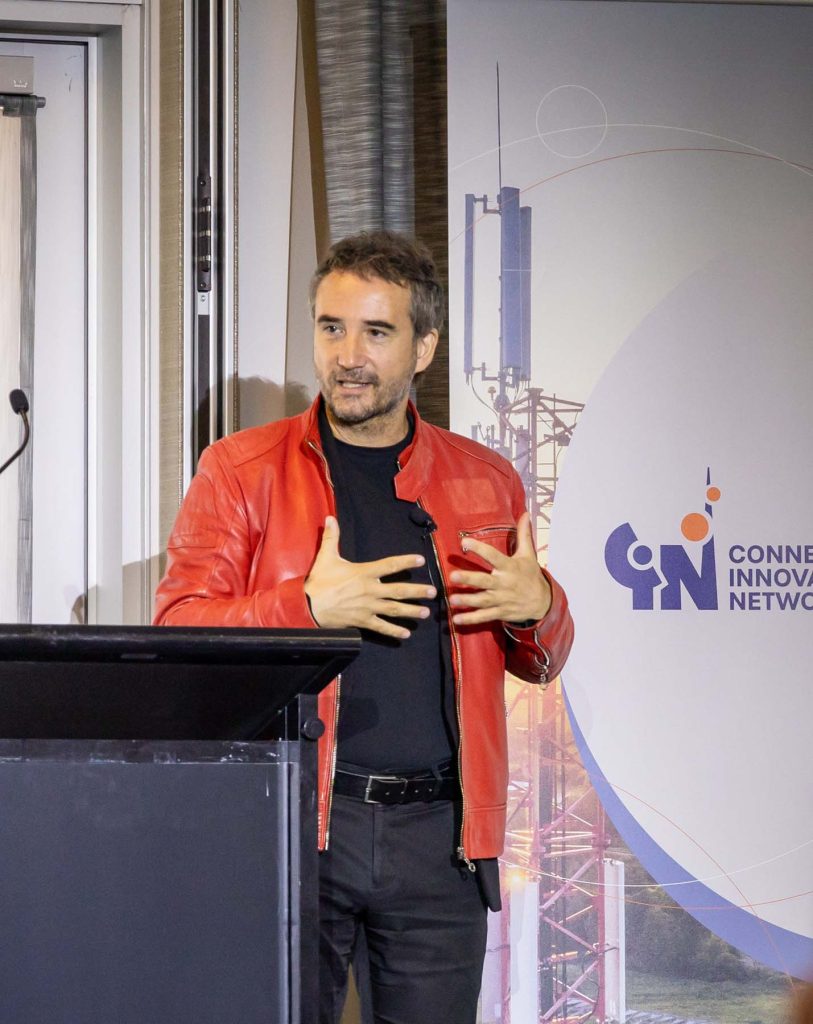
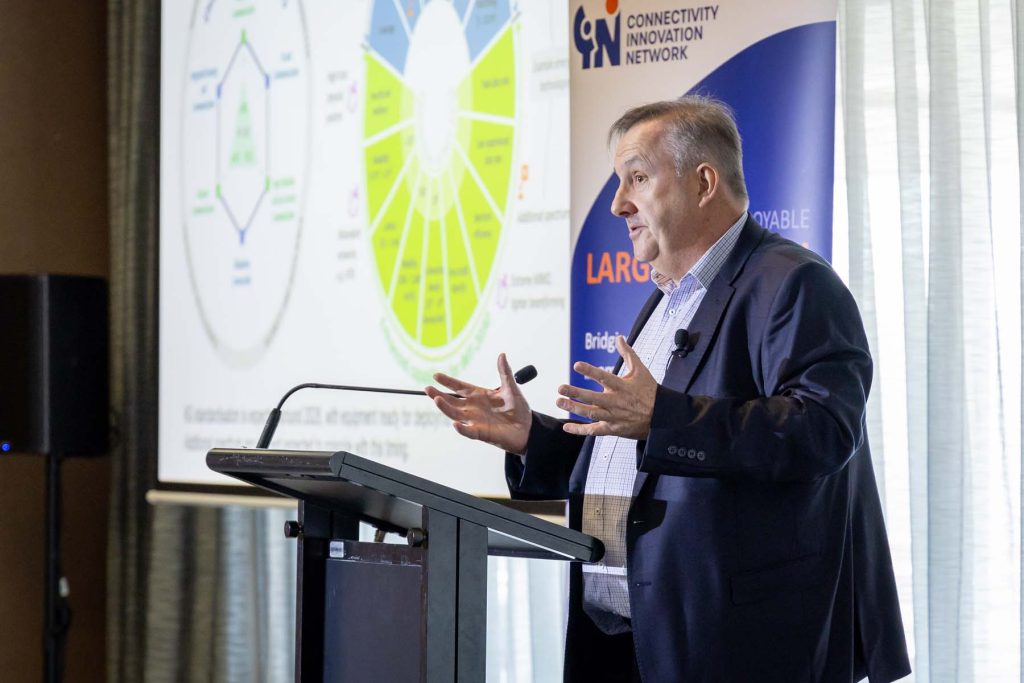
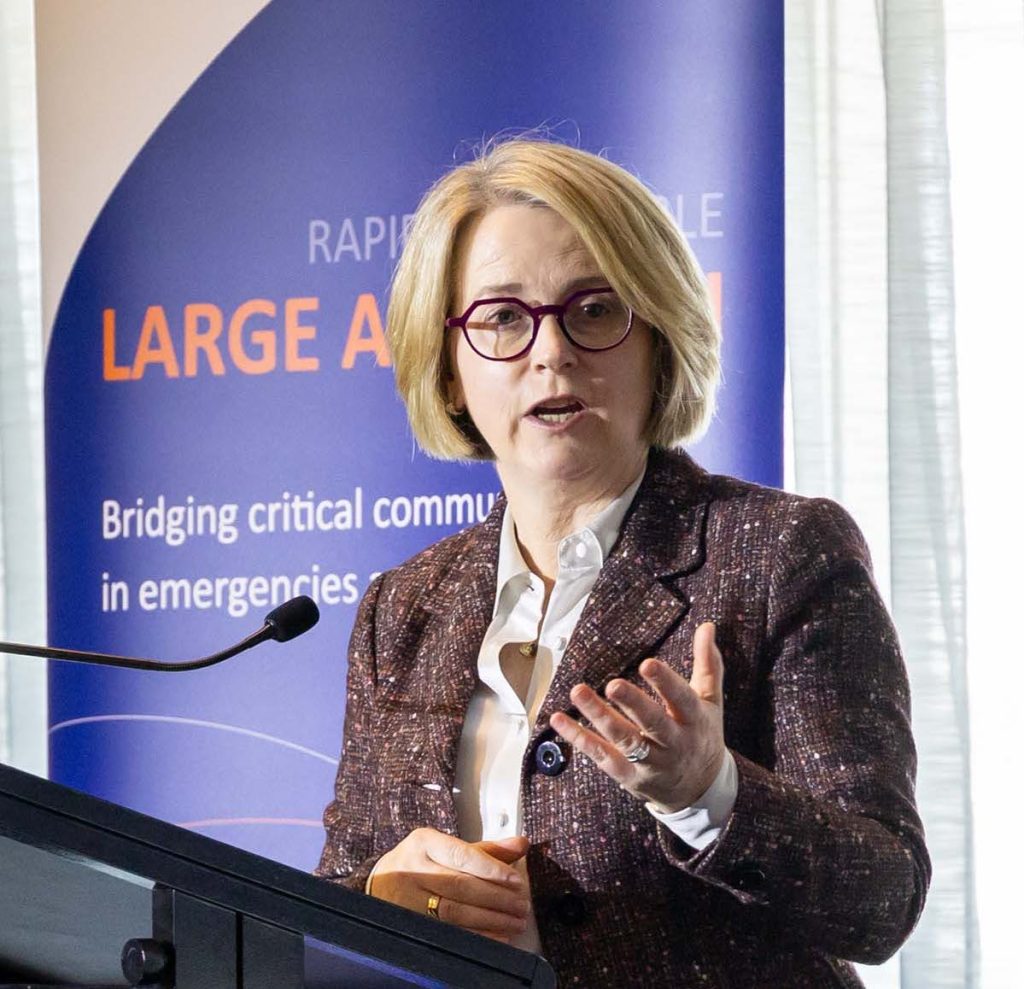
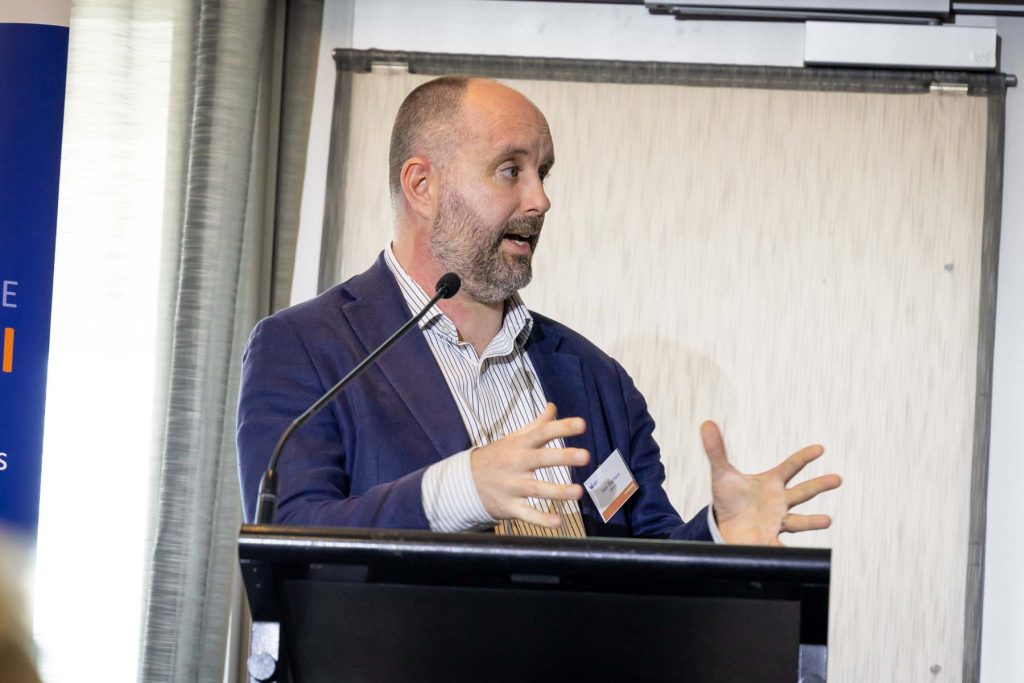
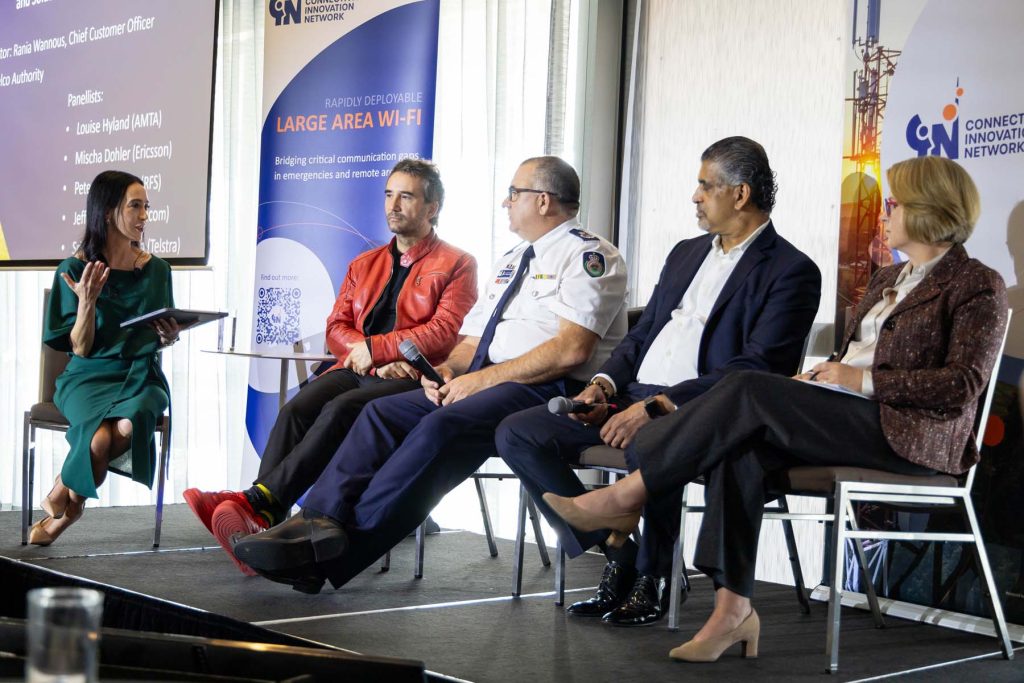
Day 2: Research Driving the Next Generation of Connectivity
The second day of the 3rd Annual Australian Beyond 5G Connectivity Summit shifted focus to the academic and research side of connectivity, featuring presentations on emerging technologies set to drive the transition to 6G. Researchers from leading universities joined executives from NSW Telco Authority and Telstra to share their perspectives on integrated sensing, artificial intelligence, and innovative hardware solutions, underscoring the valuable combination of research and industry expertise in addressing future connectivity challenges.
The day opened with James Pickens, Chief Digital & Technology Officer at NSW Telco Authority, who shared insights into the development of the state’s digital inclusion strategy. Designed to bridge the digital divide across New South Wales, this strategy envisions 6G-enabled autonomous emergency response systems to support public safety. Pickens stressed the need for trust and standardisation to ensure reliable connectivity across urban and rural settings, highlighting that ubiquitous connectivity can only be achieved through sustained collaboration between government, industry, and academia.
Adding a practical perspective, Telstra’s Wireless Engineering Executive, Sri Amirthalingam, discussed the challenges and opportunities in evolving connectivity, focusing on Open RAN, spectrum management, and the role of AI in optimising networks. He noted that the future of 6G will rely on cohesive networks that integrate both terrestrial and satellite systems, a crucial step in achieving universal connectivity even in Australia’s most remote areas.
Professor Andrew Zhang from the University of Technology Sydney introduced the concept of Integrated Sensing and Communications (ISAC), where networks not only connect people but also sense and respond to their surroundings. Real-world applications, such as WiFi-based human movement monitoring, illustrated ISAC’s potential to enhance safety, efficiency, and automation in various sectors.
Innovation in hardware design took centre stage with Dr Francisco Pizarro Torres’ exploration of 3D-printed antennas for space communication. This approach enables rapid prototyping and the creation of complex, cost-effective designs, paving the way for next-generation satellite systems and expanding the scope of space-based connectivity.
Professor Tao Gu from Macquarie University highlighted advances in wireless sensing combined with AI, demonstrating how these technologies enable smarter, more resilient systems. His work on low-power networks like LoRaWANs and edge AI offers solutions for remote IoT applications by allowing data processing directly on devices, thus reducing connectivity demands and enhancing real-time responsiveness.
On the theoretical front, Professor Lawrence Ong of the University of Newcastle examined the complexities of balancing communication and sensing within ISAC networks. His insights suggested a future where networks are integral to their environments, interacting intelligently to support applications in smart cities and automated systems.
Addressing the data demands of 6G, Professor Xiaojing Huang presented in-band full-duplex (IBFD) technology, an innovative approach that allows for simultaneous transmission and reception on the same frequency. This advancement in spectral efficiency represents a breakthrough in achieving the higher data rates required for the next generation of connectivity.
Professor Min Xu from UTS showcased how multimedia intelligence, driven by machine learning, is transforming smart city planning, healthcare, and retail. By combining video analytics with wireless sensing, multimedia intelligence offers data-driven insights that improve real-time decision-making.
Concluding the day, Dr Akram Shafie from UNSW introduced delay-Doppler modulation, a novel approach designed for high-mobility environments where traditional methods struggle, such as underwater and high-speed vehicular networks. His technique provides enhanced performance in these dynamic scenarios, expanding the reach of future connectivity solutions.
Together, the presentations highlighted the diverse approaches driving the evolution from 5G to 6G, showcasing how academic research and industry experience are working together to shape a future defined by seamless connectivity, intelligent networks, and universal access.
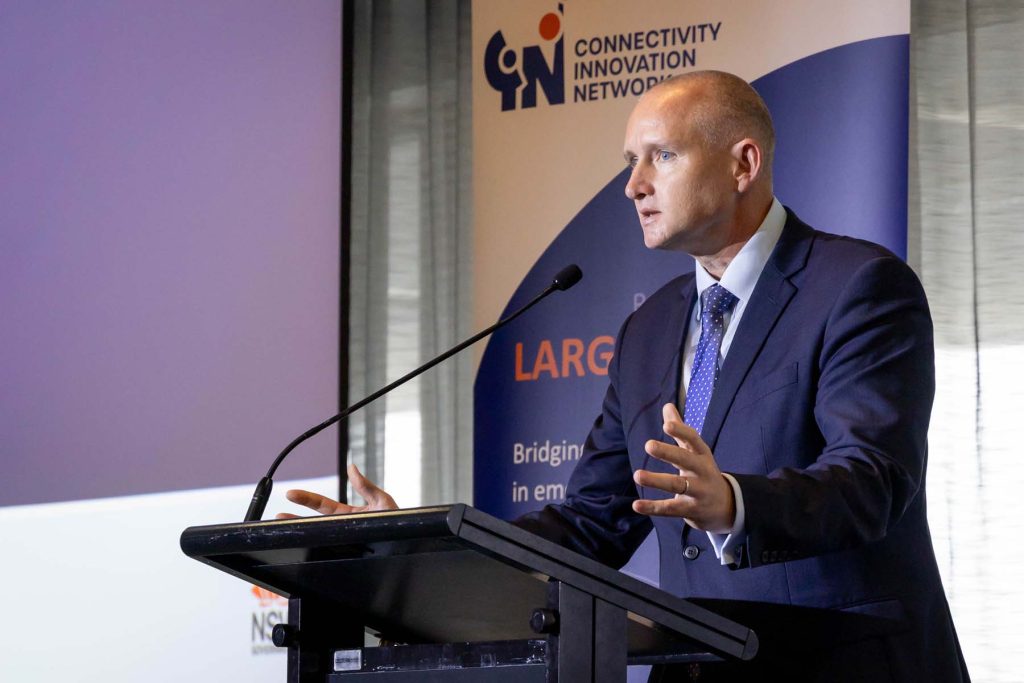
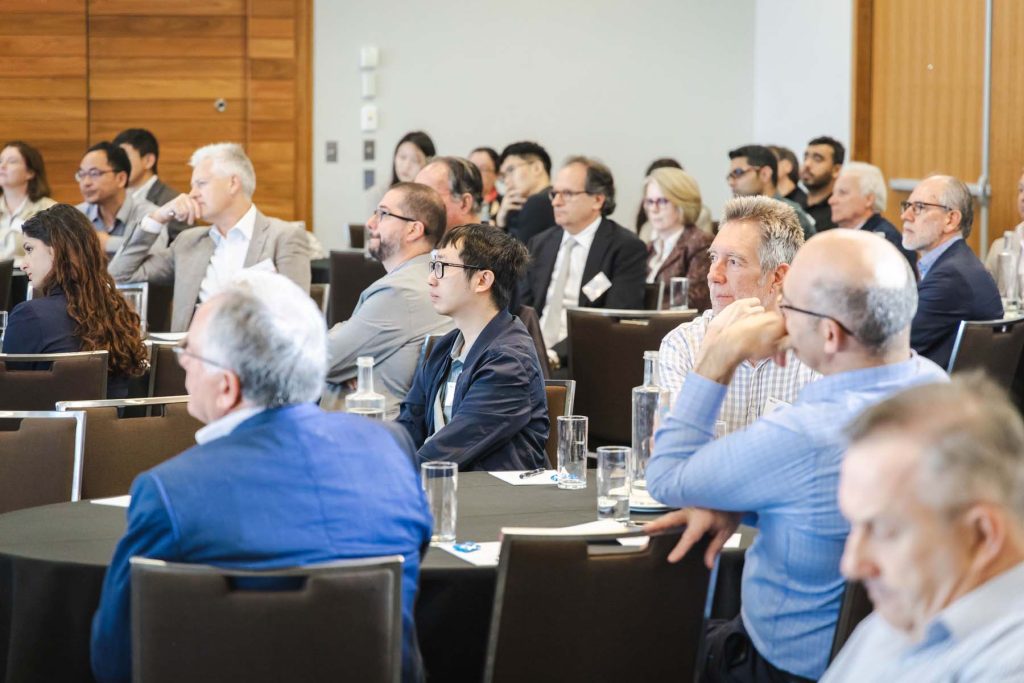
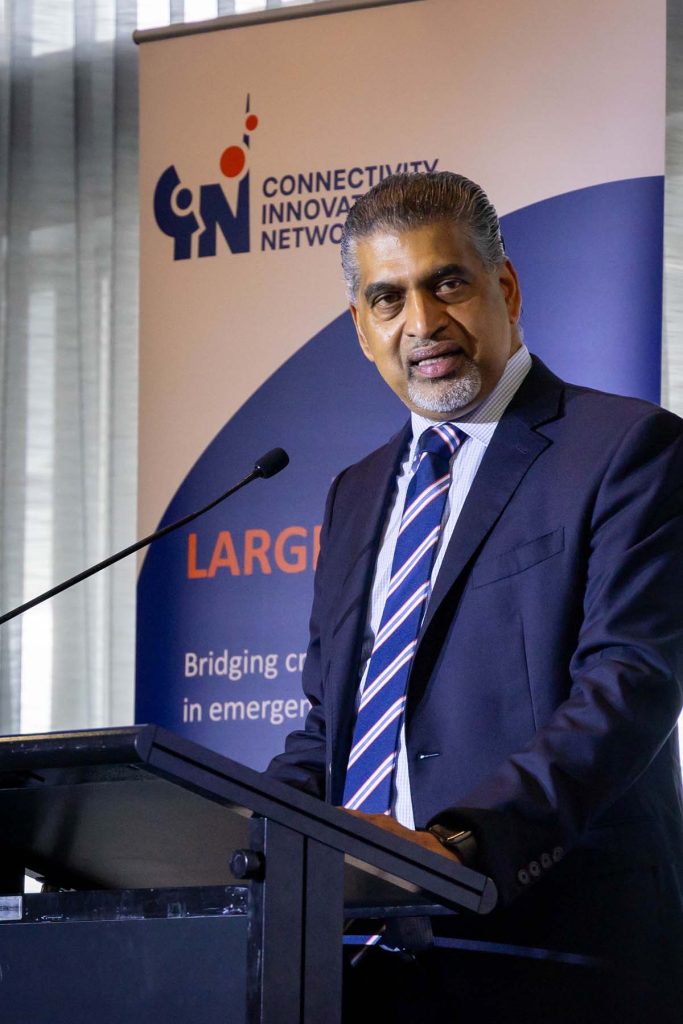
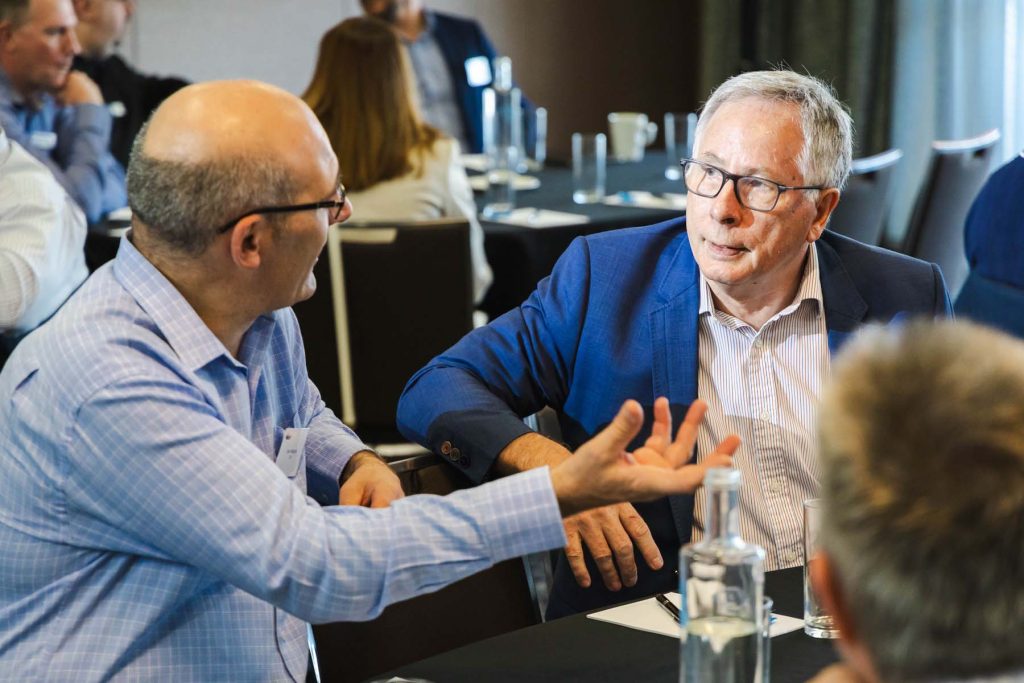
Full list of speakers and panellists
Day 1: Industry Track
Professor Mischa Dohler – Vice President, Emerging Technologies, Ericsson Inc.
Distinguished Professor Jay Guo – Technical Director, Connectivity Innovation Network
Louise Hyland – Chief Executive Officer, Australian Mobile Telecommunications Association
Professor Yonghui Li – Co-Technical Director, Connectivity Innovation Network
Dr Ian Oppermann – Director, Connectivity Innovation Network
Jeff Owen – Head of Wireless Strategy, TPG Telecom
Sam Stephens – General Manager, Wireless Technologies, NBN co
Panel:
Sri Amirthalingam – Wireless Engineering Executive, Telstra
Professor Mischa Dohler – Vice President, Emerging Technologies, Ericsson Inc.
Louise Hyland – Chief Executive Officer, Australian Mobile Telecommunications Association
Peter McKechnie – Deputy Commissioner Field Operations, NSW Rural Fire Service
Rania Wannous – Chief Customer Officer, NSW Telco Authority
Day 2: Research Track
Sri Amirthalingam – Wireless Engineering Executive, Telstra
Professor Tao Gu – Professor IoT, Macquarie University
Professor Xiaojing Huang – Professor of ICT, University of Technology Sydney
Professor Lawrence Ong – Associate Professor, University of Newcastle
James Pickens – Chief Digital and Technology Officer, NSW Telco Authority
Assoc Professor Francisco Pizarro Torres – Associate Professor, Pontificia Universidad Católica de Valparaíso, Chile
Dr Akram Shafie – Post Doc Research Associate, University of NSW
Prof. Min Xu – Leader of Visual and Aural Intelligence Laboratory GBDTC, University of Technology, Sydney
Professor Andrew Zhang – Professor in Wireless Communications and Sensing, University of Technology Sydney
More photos

